






Mtro. Hugo Antonio Avendaño Contreras
RECTOR
Dra. Gabriela Martínez Iturribaría
VICERRECTORA
Mtro. Marco Antonio Velázquez Holguín
DIRECCIÓN GENERAL DE ADMINISTRACIÓN Y FINANZAS
P. Miguel Ángel Ramírez Flores, MG
DIRECCIÓN GENERAL DE FORMACIÓN INTEGRAL
P. Gerardo López Vela, MG
INSTITUTO INTERCONTINENTAL DE MISIONOLOGÍA
Boletín del Colegio de Estudios Guadalupanos

EDITOR
Arturo Rocha Cortés
CONSEJO EDITORIAL
Gustavo Watson Marrón
Ramiro Gómez-Arzapalo Dorantes
David Sánchez Sánchez
Alberto Hernández Ibáñez
Arturo Rocha Cortés

BOLETÍN DEL COLEGIO DE ESTUDIOS GUADALUPANOS, Año 4, No. 7, enero – junio 2024 es una publicación semestral editada por la UIC Universidad Intercontinental, A.C., calle Insurgentes Sur 4303, Col. Santa Úrsula Xitla, C.P. 14420, Tlalpan, Ciudad de México. Tel. (55) 5487-1300, www.uic.mx. Editor responsable: Arturo A. Rocha Cortés. Reserva de Derechos al Uso Exclusivo No. 04-2020-040100080300-102 otorgado por el por el Instituto Nacional del Derecho de Autor. ISSN: 2954-4157. Número de Certificado de Licitud de Título y Contenido otorgado por la Comisión Calificadora de Publicaciones y Revistas Ilustradas: En trámite. Responsable de la última actualización de este número: Arturo A. Rocha Cortés, Colegio de Estudios Guadalupanos (COLEG), calle Insurgentes Sur 4303, Col. Santa Úrsula Xitla, C.P. 14420, Tlalpan, Ciudad de México. Fecha de última modificación: 30 de junio de 2024.
Los juicios y opiniones vertidos en esta publicación son responsabilidad exclusiva de quien(es) los emite(n) y no representan necesariamente la visión o filosofía de la Universidad Intercontinental (UIC) ni de los Misioneros de Guadalupe.
PRESENTACIÓN
Dr. Arturo A. Rocha Cortés 7
Danza guadalupana: tradición y actualización
P. Ernesto Mejía Mejía 9
De los excesos cristológicos en versiones castellanas de Nican mopohua vv. 27-28
Dr. Arturo A. Rocha Cortés 19
An Indigenous Canonization. The Journey of Juan Diego to the Altars
Mtro. Jorge Arredondo Sevilla 27
Análisis del Documento de Huejotzingo: Fray Juan de Zumárraga y el Acontecimiento Guadalupano
Dr. David Sánchez Sánchez 63


Dr. Arturo A. Rocha Cortés
El presente número del Boletín del Colegio de Estudios Guadalupanos nos ofrece cuatros artículos muy interesantes. El primero desarrolla un tema que se inscribe de lleno en el ámbito de la religiosidad popular, en su expresión de danzas y bailes de exaltación guadalupana. Se trata de sintéticas reflexiones, iluminadas desde la antropología y la teología, con las que el P. Ernesto Mejía Mejía, CMF. Ingresó en el Colegio de Estudios Guadalupanos como miembro ponente.

En un segundo momento, el editor de este instrumento de difusión de la investigación guadalupana repone una pieza sobre el relevante asunto de la cristología subyacente en el texto prístino de las apariciones de la Virgen de Guadalupe a su vidente Juan Diego: el Nican Mopohua. Diversas traducciones, en diferentes lenguas, del valioso texto tienden a exagerar el carácter cristológico de ciertos versículos en los que el P. Torroella dividió el relato mariofánico. Con la intención de no violentar lo que en efecto dice la lengua náhuatl en lo relativo a la amor que la Virgen de Guadalupe entrega a la gente, se presentan aquí estas consideraciones filológicas, apoyadas en textos de frailes del siglo XVI.
Seguidamente, el boletín se engalana con un interesante artículo que pormenoriza el derrotero que siguió la canonización del indígena san Juan Diego, en una precisa exposición que conjuga el contexto ideológico e histórico de la política mexicana de aquellos años, con los pormenores de la existencia histórica del vidente del Tepeyac. Este artículo pone en blanco y negro el tema de la conferencia con la que ingresará como miembro ponente del COLEG, el maestro Jorge Manuel Arredondo, doctorante de teología de la Universidad de Notredame y maestro en Estudios Teológicos de la Escuela de Divinidad de Harvard.
Cierra el número un artículo que será base de estudios posteriores: el análisis de un documento perteneciente a la Biblioteca del Seminario Palafoxiano y conocido como Códice de Huejotzingo. Este manuscrito, claramente una mistificación, brinda pábulo a su autor, el doctor
David Sánchez Sánchez, historiador español, presidente del Centro de Estudios Guadalupanos (CEG) de la UPAEP, para realizar interesantes comparaciones entre la holografía zumarragiana auténtica y la espuria, generada ésta en un artificial y vano afán de subsanar la falta de alusiones a la aparición guadalupana de parte de quien fuere el privilegiado testigo de la imprimación: el obispo fray Juan de Zumárraga. Estas dos últimas piezas del número 7 de nuestro Boletín del Colegio de Estudios Guadalupanos motiva su portada, en la que utilizamos la obra de Miguel Cabrera: Retablo de la virgen de Guadalupe con san Juan Bautista, fray Juan de Zumárraga y Juan Diego, perteneciente a la colección del Museo Nacional de Arte de México. A los pies de la Celestial Señora apreciamos, a la derecha, al primer santo amerindio, Juan Diego Cuauhtlatoatzin, y a la izquierda, al primer obispo de México, fray Juan de Zumárraga.



P. Ernesto Mejía Mejía†
ABSTRACT: La importancia del Acontecimiento Guadalupano nos invita a repensar la diversidad de sus manifestaciones, una de ellas, es lo que desde la religiosidad popular se denomina Danza guadalupana. Diversas disciplinas siguen estudiando este Acontecimiento Guadalupano, pero, en este estudio nos dejaremos iluminar por la antropología y la teología; ya que, hablar de la Virgen de Guadalupe es un aspecto que marca la vida de nuestra nación mexicana, también impulsa nuestra vida como creyentes bajo ese rostro materno de quien fue la primera discípula misionera y quien decidió impregnarse en la cultura mexicana en un rostro mestizo.
PALABRAS CLAVE: Religiosidad Popular. Acontecimiento Guadalupano. Danza. Cuerpo. Identidad.
ORÍGENES DE LA DANZA
Hagamos una visión retrospectiva y nos daremos cuenta de que la danza es un acontecer intrínseco en la vida de la humanidad, la danza es una manifestación que ha aparecido en todas las culturas, desde las
* El texto aquí publicado es el resultado de la incorporación del autor al COLEG, el jueves 30 de mayo de 2024.
† Misionero Claretiano. Lic. en Antropología Social (ENAH). Mtro. en Pastoral Urbana. (Universidad Católica Lumen Gentium).
culturas primigenias hasta nuestros días. Cabe señalar que existen datos de la danza muy, muy antiguos en la india, también en china, Grecia y Roma. De ahí que podemos ubicar a la danza como un elemento esencial en el ser humano. Algunos antropólogos y arqueólogos sustentan que la danza fue el primer medio de comunicación, antes del lenguaje y la escritura.
En los orígenes de la humanidad la danza trata de reflejar la armonía existente en el cosmos (todo él es movimiento y armonía). La danza aparece con diferentes connotaciones, danzas festivas, danzas lúdicas… y las danzas religiosas. Así hablamos de las Danzas Guadalupanas que guardan y expresan todo un fuerte sentido ritual; en las cuales se encuentra el creyente (danzante o espectador), en las cuales interactúa el pueblo, en donde el ser humano estrecha una relación con lo trascendente. Así podemos hablar de una articulación, una lógica religiosa de movimiento, la rítmica como comunicación con lo religioso.

Algunas veces, algunos se preguntan si las danzas están permitidas dentro del ambiente católico o son únicamente expresiones espontaneas o profanas que se han indo insertando. Las Sagradas Escrituras, sobre todo el Antiguo Testamento tiene muchas referencias en las cuales el pueblo de Israel se manifestaba corporalmente, a través del ritmo, de la música, del canto, de la propia danza. Recordemos la cita bíblica del rey David: “Y David danzaba con toda su fuerza…” (2 Samuel 6,14). Los Salmos como el 30 y el 149 también hacen referencia a cantos, alabanzas y ritmo de danza. Hay que expresar que la danza está aceptada dentro del ámbito religioso, que no es una adhesión, que no es algo profano, el riesgo o lo no aceptado es cuando hay excesos, cuando se pierde el respeto por lo religioso o se pasa por alto el cuidado por el bien común. El Nuevo Testamento también refleja algunas danzas, dentro de ellas la que podemos recordar, con una connotación muy negativa es la danza que se utilizó como pretexto para dar muerte a Juan el Bautista.
Entonces, no se puede negar que se ha venido dando una manifestación dancística válida dentro de la religión católica, muchas de ellas con un fuerte aspecto de inculturación, y donde la religiosidad popular se manifiesta con gran respeto y creatividad, esta religiosidad popular
a la que el Papa Francisco se expresa como un “tesoro que tienen los pueblos originarios”. Aunque él mismo prohíbe los desvíos y alerta ante los excesos. Con esta guarda, este gran tesoro que es la religiosidad popular a través de la Danza Guadalupana lo encontramos en nuestra nación mexicana, desde el norte hasta el sur. Invito a tener una mirada especial a las Danzas Guadalupanas (enmarcadas dentro de las Peregrinaciones Guadalupanas) en la Parroquia de Nuestra Señora de Guadalupe, en la ciudad de Torreón Coah., en donde del 1 al 11 de diciembre el primer cuadro de dicha ciudad se ve cubierto de danzantes con sus vistosos bailes y atavíos.
Partimos de un compromiso del creyente: “Todo bautizado es discípulo misionero”. Por consecuencia, si el que danza está bautizado es un discípulo misionero. Muchos de ellos llevan una vida ejemplar. Muchos de ellos como cualquier otro ser humano están en esta dinámica del aquí y ahora, de la mejoría en su vida. De esto, el escenario de la danza y del danzante se hace más profundo, al que danza no solamente se le percibe en cuanto al desgaste físico, el elemento corporal, la comunicación o por su devoción. Si el que danza está bautizado, es todo un discípulo misionero o debería de serlo. De tal suerte que cuando nos acercamos a un danzante, tenemos que ver en él a un agente importante de evangelización.
Estos dos términos parecerían polarizados, sin embargo, si está de por medio el acontecimiento guadalupano, se da necesariamente el elemento de la continuidad. Hay una tradición, pero como un constructo histórico, una línea del tiempo que va describiendo toda una historia nacional, que manifiesta toda una cultura, que describe transformaciones, pero es un “continuo”, ya que el Acontecimiento Guadalupano desde la fe, es un acontecer diario.
Aunque la danza refleja todo el pasado de los pueblos originarios, por su parte, la actualidad se nota en los atuendos, el tipo de guaraches, en la belleza de sus plumajes, en los ritmos y muchos otros aspectos que se han ido implementando.
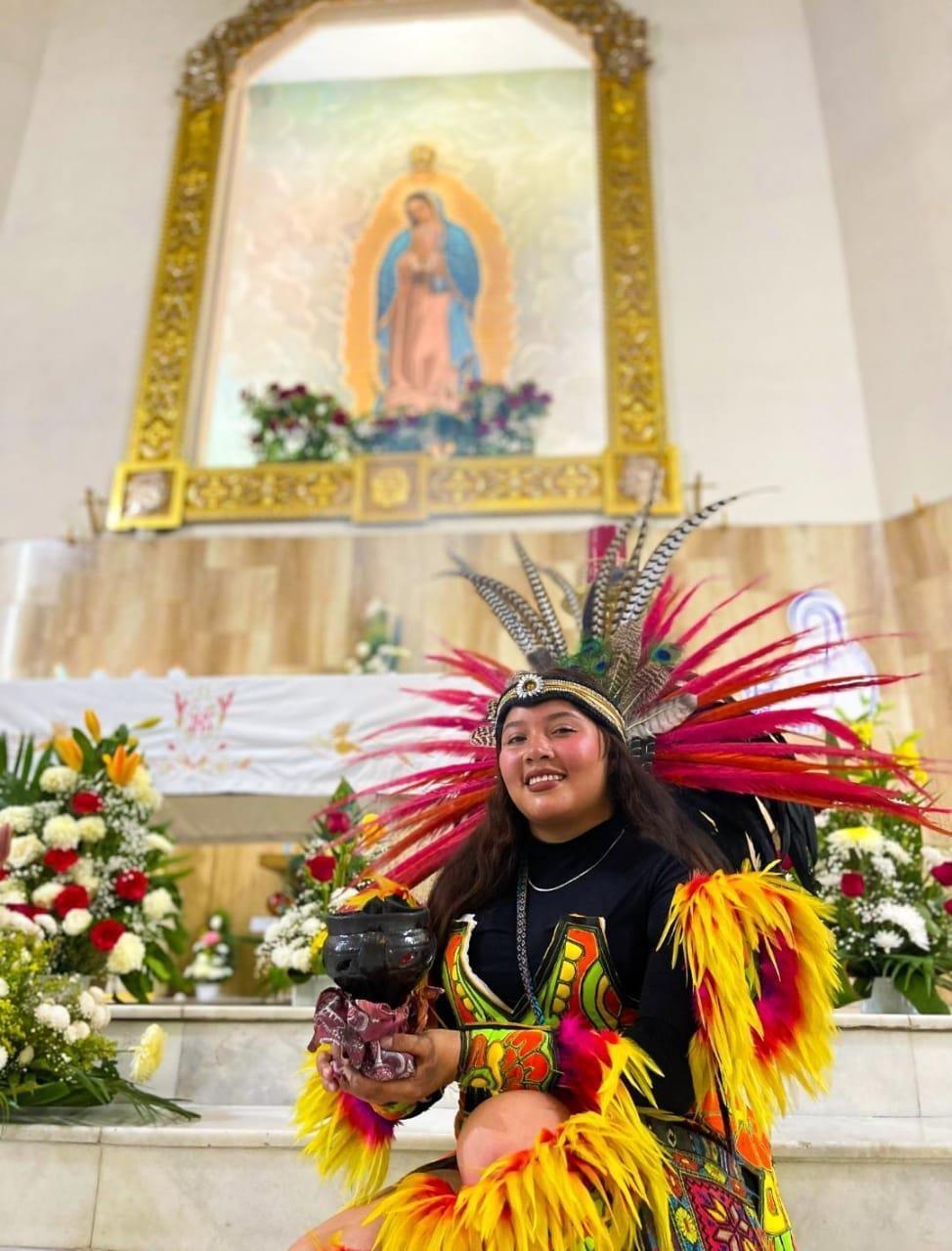

Pero, hay algo interno que no cambia, como el deseo del encuentro, el respeto y la esperanza hacía la Virgen de Guadalupe. Se actualizan muchos aspectos externos, pero,
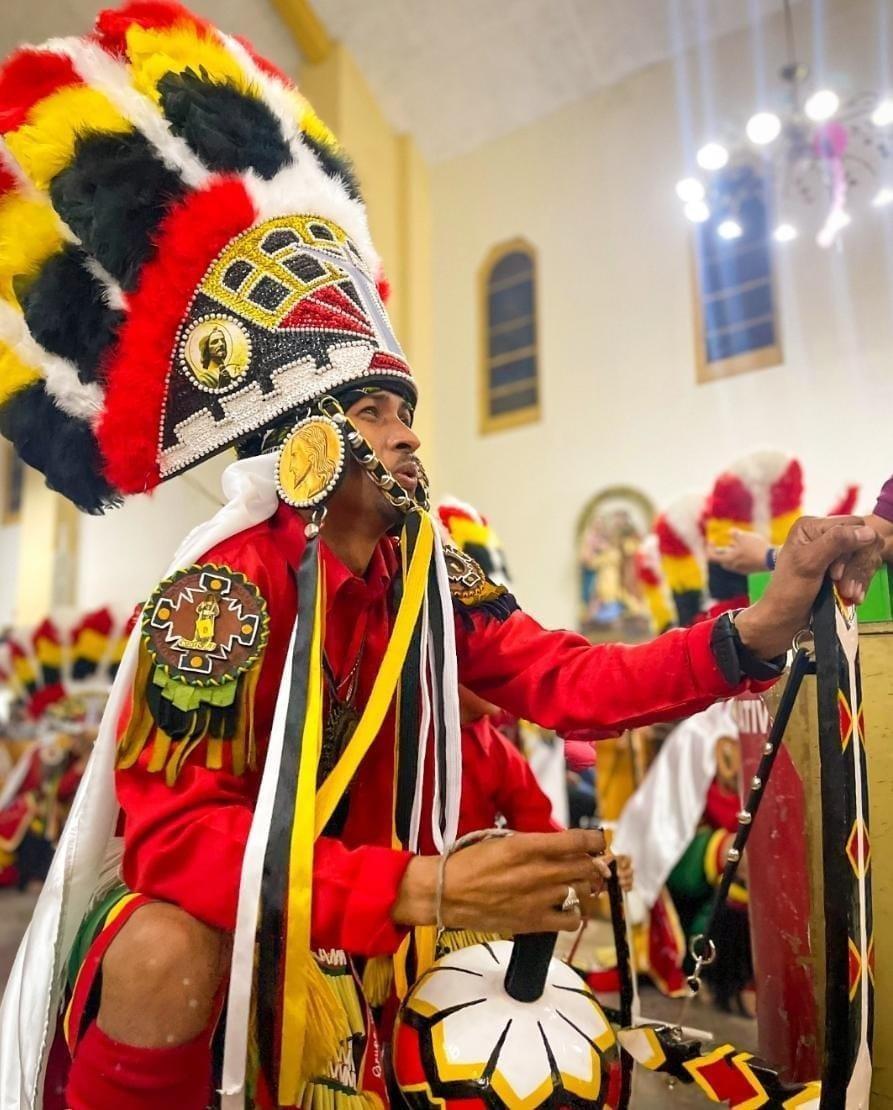

podemos decir en este “continuo”, que el corazón del creyente, del danzante: la fe es la misma. El encuentro de aquel que cree, de la comunicación de aquel que desea, de una nación que se siente cobijado por expresiones tan maternales, tan cercanas y llenas de protección: “No estoy yo aquí que soy tu Madre”. La certeza: “Yo represento al Dios del Cerca y del junto”. La cercanía: “Yo quiero que se me construya una
casa para estar cerca de ti, para escuchar tus lamentos”. Este “continuo” que es el Acontecimiento Guadalupano genera este vínculo, esta bella expresión de todo este acontecer dancístico. La tradición y la actualidad se unen en un rostro femenino, en un rostro materno que da cuidado, que da cobijo, que da esperanza. Entre lo tradicional y lo actual cambian muchas cosas en este devenir. Pero, en medio de todo esto, hay una persona que acompaña, que es la Virgen de Guadalupe. Entonces, podemos detenernos y remarcar que, dentro de una tradición, de un “continuo” cultural e histórico, dentro de una actualización hay elementos no negociables que no tienen fecha de caducidad, y que no solo entran en dinámicas temporales, sino también metahistóricas; manifiestas en la presencia de una Virgen, de una Madre que cuida, pero lo que le da mucha actualidad es el aspecto de que la danza es un vehículo de comunicación en constante movimiento. Y esto como Iglesia católica hay que valorarlo mucho.
¿POR QUÉ DANZA GUADALUPANA?
Ahora bien, ¿que sería lo específico de las Danzas Guadalupanas? Lo que le da la especificidad es encontrase con una persona, con una Madre. En algunas entrevistas realizadas a jóvenes danzantes de Torreón, Coah., expresan que al danzar se encuentran con alguien, se encuentran con una Madre que acoge, con una Madre que da esperanza, con una Madre que valora las diversas formas de acercarse a Ella. Esto es lo que también genera una manera propia de entender toda la ritualidad de la danza guadalupana.

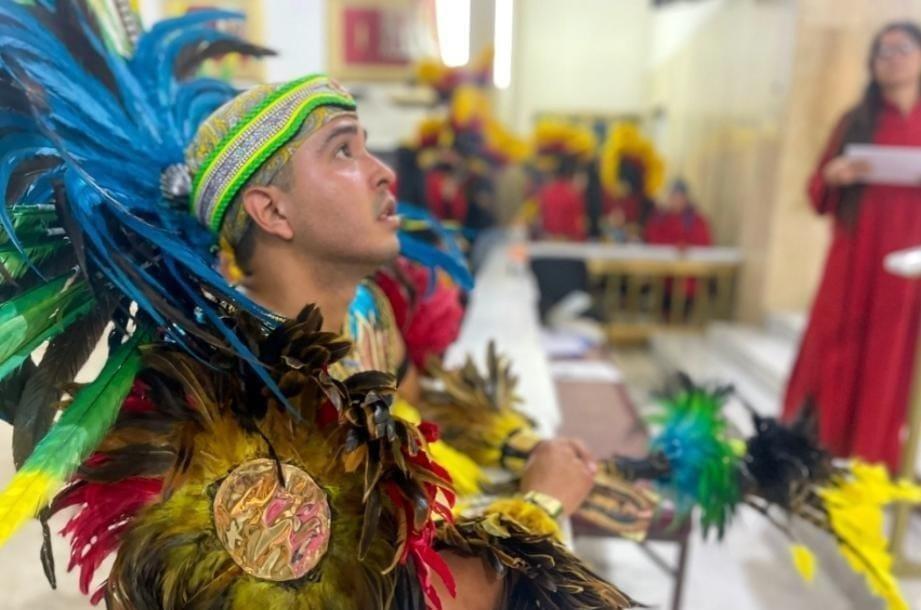

La Danza Guadalupana es otra manera de acercarse a la Virgen; ahí encontramos también una actualización no de una manera formal, no de una manera prescrita, sí de una manera vivencial. El joven, la joven danzante sabe que hay un encuentro con alguien y este alguien es la Virgen Morena y desde esta manera de encuentro, de relación, de contacto a través de la danza, se genera un ritual religioso propio y una actualización a través de los más variados ritmos. Y una singularidad muy importante es la presencia juvenil a través del propio cuerpo.
DANZA: LENGUAJE CORPORAL
Al hablar de la actualización, debemos de hacer un énfasis en el aspecto del cuerpo, la corporeidad. Hay una cita bíblica en la que San Pablo nos pone el ejemplo del cuerpo, en donde la Cabeza del cuerpo es Jesucristo. Es decir, toda una teología del cuerpo. Podemos retomar esta cita bíblica, no en el nivel de la exégesis o de la hermenéutica, pero sí de una narrativa bíblica y aplicarla a la danza, ya que, en ésta, el cuerpo es un elemento primordial. A través del cuerpo vemos un nuevo lenguaje religioso, toda una ritualidad, que puede ser de gran actualidad en nuestros días.
La posmodernidad habla del cuidado del cuerpo. Y vemos que el cuerpo en la danza manifiesta un vínculo de comunicación, de
cercanía con la Virgen Madre, con la Virgen Morena. Los que danzan saben de la importancia del cuerpo. La danza es todo un arte, toda una armonía, toda una estructura, pero también hay un desgaste físico, hay un desgaste del cuerpo. En la danza hay rostros de jóvenes que llegan literalmente sudando, algunos de ellos con los pies lacerados… ahí está jugando un papel importante el cuerpo, el cuerpo que habla, el cuerpo que es encuentro, el cuerpo que está manifestando un mensaje actual. De tal suerte que los movimientos corporales son los vasos comunicantes, que tienen como cabeza a Jesucristo, y como corazón a la virgen de Guadalupe.

El Acontecimiento Guadalupano en sí es una actualización. Tiene una frescura, tiene una novedad, y se nota cada 12 de diciembre. Como creyentes hay que darle gracias al “Dios del Cerca y del junto”, porque esta Madre Virgen decidió estar en nuestra nación y no solamente cada 12 de diciembre, sino, día con día. Es un acontecer que tiene como centro la Buena Noticia que es Jesús. Es innegable que las danzas se siguen reactualizando, sin embargo, los propios danzantes, dicen: Cambian los ritmos, pero lo que no cambia es nuestra fe, nuestra devoción y nuestro respeto hacia la Virgen.
La Danza Guadalupana en sí tiene una connotación religiosa, es todo un escenario guadalupano. Se sabe que hay algunos danzantes que cobran, algunos danzantes a lo mejor no son creyentes, pero esto no está generando una danza profana, sino una danza religiosa, la danza guadalupana. Sí, se debe tener cuidado en las danzas que quizá tienen otros fines, pero, por lo regular si alguna danza guadalupana tuviera algunos excesos los mismos danzantes, los devotos observadores lo marcarían, lo reprobarían. Si se habla de una Danza Guadalupana es porque hay una tradición, existe un respeto, pervive una herencia, exige toda una preparación y se genera una identidad religiosa.
Un valor muy importante es que la Danza Guadalupana genera una identidad religiosa y en dicha identidad se ve manifiesto un personaje concreto: el joven.
La danza manifiesta necesariamente un renuevo, que incluso se da por tradición familiar: se ve al abuelo, a la abuela, a la mamá o al papá llevando ya desde pequeño al niño o a la niña, vestidos de danzantes. Ya desde temprana edad esto va generando una manera de acercamiento, un vínculo con la Virgen de Guadalupe. Así, se da una identidad religiosa juvenil, ya que la mayoría de los danzantes son niños, adolescentes y jóvenes. Y esta identidad religiosa es fundamental para la iglesia católica.
Dr. Arturo A. Rocha Cortés†
ABSTRACT: Una estricta revisión de la versión castellana de dos versículos esenciales del relato de las apariciones de la Virgen de Guadalupe al indio Juan Diego. Una traducción excesiva o un forzamiento del náhuatl perpetuado por algunos autores, ha dotado a ambos versículos del Nican Mopohua de una carga cristológica que en la lengua mexicana no poseen en absoluto. Este artículo corrige de una vez por todas los excesos de traducción, dejando a salvo el ámbito para ulteriores elaboraciones exegética.
PALABRAS CLAVE: Nican Mopohua, Virgen de Guadalupe, Cristología, P. Mario Rojas, Fr. Andrés de Olmos.

Uno de los momentos más hermosos y exaltados de la relación náhuatl de las apariciones de la virgen de Guadalupe, el Nican mopohua, es ciertamente aquel en que la celestial Señora, tras referirse a su Divino Hijo con la relación de los atributos teológicos más acendrados del México antiguo,1 instruye puntualmente al indio Juan Diego: “…huel
* Artículo publicado previamente en la revista Voces. Revista de Teología Misionera de la Escuela de Teología de la Universidad Intercontinental, Publicación Semestral de la Escuela de Teología de la Universidad Intercontinental, Año 18, no. 35 (2011), ed. Arturo Rocha, México: UIC, pp. 123-129.
† Director Académico del Colegio de Estudios Guadalupanos (COLEG) de la UIC.
1 “…ca nêhhuatl in niçenquizca çemicac ichpochtli santa maria in inn inantzin in in huel nelli teotl Dioz in ipalnemohuani in […] teyocoyani, in tloque Nahuaque: in ilhuicahuah in tlalticpacque…” [Antonio VALERIANO], Nican mopohua, vers. 26: NYPL, Ms. 379 Guadalupe, México (ca. 1548), Monumentos Guadalupanos, serie I, t. I, ff. 191r-198r. El
[…] nicnequi, çenca nicelehuia inic nican nechquechilizque noteocaltzin inn oncan nicnextiz, nicpantlaçaz nictemacaz in ixquich notetlaçotlaliz, noteicnoyttaliz, in notepalehuiliz, in notemanahuiliz…”,22 que literalmente significa: “Mucho quiero yo, mucho así lo deseo que aquí me levanten mi casita divina, donde mostraré, haré patente, entregaré a las gentes todo mi amor, mi mirada compasiva, mi ayuda, mi protección…”;3 nada más.
La cuestión es que otros autores como el gran campeón del guadalupanismo, P. Mario Rojas, han traducido el pasaje náhuatl in oncan nicnextiz, nicpantlaçaz nictemacaz in ixquich notetlaçotlaliz, noteicnoyttaliz, in notepalehuiliz, in notemanahuiliz como: “en donde Lo mostraré, Lo ensalzaré al ponerlo de manifiesto: Lo daré a las gentes en todo mi amor, en mi mirada compasiva, en mi auxilio, en mi salvación…”,4 con lo que a nuestro juicio y dicho con todo respeto a la persona del recientemente desaparecido sacerdote , es violentar el náhuatl al extremo de hacerle decir… lo que no dice.
El asunto resulta tanto más relevante cuanto estos dos versículos del Nican mopohua son los que se aducen en infinidad de ocasiones para apuntalar prácticamente toda la cristología de la narración del sabio Antonio Valeriano. Y no estamos señalando meras accidentalidades: el P. Rojas y quienes siguen su versión del náhuatl (o sea, una buena
lugar citado corresponde al f. 192v. Véase: Arturo ROCHA, Monumenta Guadalupensia Mexicana. Colección facsimilar de documentos guadalupanos del siglo XVI custodiados en México y el mundo, acompañados de paleografías, comentarios y notas por…, con una presentación de Mons. Diego Monroy Ponce, Vicario General y Episcopal de Guadalupe, Rector del Santuario. Palabras preliminares de M. I. Mons. José Luis Guerrero, Miembro del V. Cabildo de Guadalupe. Prólogo del autor, México: Insigne y Nacional Basílica de Santa María Guadalupe/ Grupo Estrella Blanca, 2010, p. 11.
Véase también: Arturo ROCHA, “Nican Mopohua”, Boletín Guadalupano. Información del Tepeyac para los Pueblos de México, año III, núm. 38 (feb. 2004), 7-11 pp., México: Insigne y Nacional Basílica de Guadalupe, p. 9.
2 Nican mopohua, vv. 27-28: NYPL, Ms. 379…, cit., ff. 192v-193r. Cfr. ROCHA, “Nican mopohua”, Boletín guadalupano…, cit., pp. 9-10.
3 Vid. Miguel LEÓN-PORTILLA, “Nican mopohua. Traducción del náhuatl de…”, in: Ana Rita VALERO, Arturo ROCHA, Miguel LEÓN-PORTILLA, Diego MONROY, et al., Juan Diego Cuauhtlatoatzin, presentación de Norberto Cardenal Rivera Arzobispo Primado de México, proemio de Manuel Ramos Medina, México: Insigne y Nacional Basílica de Guadalupe/ DGE Equilibrista, 2005, 19- 39 pp.; pp. 23-24.
4 Vid. ROCHA, Monumenta Guadalupensia Mexicana, pp. 11 y 13.
cantidad de autores), escriben incluso con mayúscula el artículo “Lo”: “Lo” ensalzaré, “Lo” daré a las gentes para que no quede la menor duda de que Nuestra Señora de Guadalupe se refiere a su Hijo Jesucristo.
La pregunta obligada es la siguiente: ¿Esto es así efectivamente? ¿Dice María de Guadalupe en NM, 27-28 que va a ensalzarlo a Él (a Cristo), que lo dará a Él a las gentes, y además, en todo su amor (de la Virgen), en su mirada compasiva, en su auxilio, en su salvación?
La respuesta podrá hasta enfadar a muchos, pero la verdad es que el náhuatl no dice aquello. Y si bien de las palabras de María de Guadalupe puede realizarse la interpretación exegética de que Ella se está refiriendo a Cristo Jesús (pues, a final de cuentas, Él, su Divino Hijo, es lo que entrega a las personas a través de su amor de madre), lo cierto es que aquellos “Los” para nada están presentes en los versículos en lengua mexicana.
Examinemos el tema. Tras los verbos en futuro nicnextiz, nicpantlazaz, nictemacaz (que no quieren decir nada distinto de “[yo] mostraré”, “[yo] patentizaré”, “[yo] entregaré”) viene el meollo de la cuestión, pues Nuestra Madre dice a Juan Diego in ixquich notetlazotlaliz, lo que literalmente significa: “todo mi amor [a las personas]. La partícula no(“mi”, “mis”) hace las veces de adjetivo posesivo.
Pero es a la partícula te- a la que hay prestar más atención, Por ejemplo, como enseña Rémi Siméon, hablando del complemento de las oraciones nahuas, cuando éste no está expresado, “se utiliza el pronombre indefinido te para las personas y tla para las cosas”;5 como cuando se dice nite-tlazotla, “amo a alguien o a la gente” o bien nitlatlazotla, “quiero una cosa o las cosas”.

Andrés de Olmos [ca. 1480-1571], fraile franciscano, lengua de lenguas del náhuatl, enseña esto mismo en el cap. VII de su Arte, a propósito de algunas partículas que se juntan con los verbos activos:
Tla. - Esta particula tla denota que la acción del verbo a quien se ayunta puede generalmente conuenir, o puede pasar en cosas inanimadas o animadas, aunque por la mayor parte se pone para denotar cosas inanimadas, y quiere
5 Rémi SIMÉON, Diccionario de la lengua náhuatl o mexicana, redactado según los documentos impresos y manuscritos más auténticos y precedido de una introducción por…, México: Ed. Siglo XXI, 172004 [Colección América Nuestra. América Antigua], p. LXXVI.
decir lo que en nuestro romance decimos: algo. Ex.: nitlatlaçotla, amo algo. […]
Te. - Esta particula te denota que la acción del verbo passa en cosas animadas y por la mayor parte se dize de cosas racionales. Esta quiere decir: alguno, no señalando quien. Ex.: nitepaleuia, ayudo a alguno. […] [sic]6
En suma: tla y te son partículas que indican que la acción de los verbos con los que se vinculan se da con “algo” o bien con “alguno”, respectivamente. Más todavía, Olmos enseña que la partícula te significa “alguno, no señalando quién”, por lo que no se la podría “personificar” o hipostasiar en alguien específico (como podría serlo el Hijo de Dios).
Estas partículas tla y te funcionan de la misma manera en los verbales sustantivos es decir aquellos que “significan la action y operation del verbo, assi como enseñança o doctrina [sic]”,7 y que suelen acabar en liztli los cuales son, huelga decir, precisamente de la forma de los que venimos discutiendo.
Sobre estos sustantivos enseña Olmos lo siguiente:
Estos no tienen plural. La formacion dellos es del futuro del indicatiuo boluiendo la tercera persona en liztli Ex.: tetlaçotlaz, aquel amara; tetlaçotlaliztli, el amor con que aman a otros. […] Y los que salen de verbos actiuos pueden tomar las particulas tla, te, ne, porque si vienen de verbos neutros que no tuuieren nino, timo, etc. no las pueden rescebir. [sic]8
Pero también señala que “con los pronombres no, mo, y, etc. pierden el tli […] Ex.: techicaualiztli, esfuerço, notechicauliz, mi esfuerço con que esfuerço a otros [sic]”.9
Por eso en los versículos del Nican mopohua que comentamos no se escribe notetlazotlaliztli, sino notetlazotlaliz, pues tlazotlaliztli pierde el tli al recibir el pronombre no-. Podríamos enunciar el ejemplo casi
6 André de OLMOS, Grammaire de la langue náhuatl ou mexicaine, composée, en 1547, par le franciscain…, et publiée avec notes, éclaircissements, etc. par Rémi Siméon, Paris: Imprimerie nationale, M DCCC LXXV [1875], segunda parte, cap. VII, pp. 122-123.
7 Ibid., primera parte, cap. IX, p. 42.
8 Id
9 Ibid., p. 43.
en palabras de Olmos: “tlazotlaliztli, amor, notetlazotlaliz, mi amor con que amo a otros”.
En otras palabras: la partícula te en el notetlazotlaliz del versículo del Nican mopohua en cuestión , significa que la acción de dar “mi amor” (esto es, el de la Virgen de Guadalupe) se verificará con las personas. Pero ello no quiere decir que lo que María dará sea una persona. Dicho de otro modo, el pronombre indefinido te, subraya el carácter personal de la palabra tlazotla, es decir, que cuando esta acción se verifique (cuando se dé dicho amor) se verificará con las personas, pero no que sea precisamente una persona lo que se dará, y mucho menos una Persona (la Segunda de la Trinidad: el “Lo” de la versión de Rojas).
Se ha querido argumentar que en náhuatl “mi amor” se dice notlazotlaliz, y que lo que vuelve a esta palabra distinta de notetlazotlaliz es propiamente la partícula te, y como ésta se refiere a la persona, pues entonces no-te-tlazotlaliz significa “mi-personaamor” o “mi amor persona”.10 Pero esto es una fabricación, pues te no quiere decir “persona”, noción más propia de expresarse con sutiles difrasismos (como el in ixtli in yollotl explicitado por León-Portilla y López Austin) o aun por el propio náhuatl tlacatl. Este te es más bien una partícula referencial o un relativo de (o para) las personas, de (o para) los demás. No hay diferencia en que dicho pronombre indefinido se enlace con un verbo o con un sustantivo.

10 En esto se pliega literalmente el P. José Luis Guerrero al P. Mario Rojas, pues de éste tomó, a final de cuentas, todo el análisis filológico de la relación de Valeriano para su intento de exégesis. (Vid. José Luis GUERRERO, El Nican Mopohua. Un intento de exégesis, 2 vols., México: Universidad Pontificia de México, 1996 [Bibliotheca Mexicana, 67], t. I, cap. VIII, pp. 169 y 171-172). Janet Barber IHM, llega al extremo de traducir al inglés el “Lo” por “Him”, en “su” versión del Nican mopohua (verbatim de la de Rojas), perpetuando así el error: “…on which I will show Him, I will exalt Him, in making Him manifest…” (?), y aun nos endilga un “all my personal Love”: “I will give Him to the people in all my personal Love, in my compassionate Gaze, in my Help, in my Salvation…” (??) (J. BARBER, Nican Mopohua by Antonio Valeriano, c. 1548. Translated from the Spanish Version of the Rev. Mario Rojas Sánchez, 1978 by…, IHM, Ph. D., with Reference to the Nahuatl, apud GUERRERO ROSADO, op. cit., pp. 171-172, si bien el sacerdote no brinda la referencia exacta). En suma son el P. Mario Rojas, el P. José Luis Guerrero y Janet Barber quienes se adhieren a esta peculiar e inexacta traducción.
Es más sencillo todavía: En el Nican mopohua se desea insistir en el amor a la gente (no-te-tlazotlaliz) y no en el amor o querencia de o hacia las simples cosas (no-tla-tlazotlaliz).
Esta vinculación personalmente amorosa de Guadalupe ya ha sido subrayada en el ámbito teológico por los autores, alguno de ellos citado hasta por el propio Card. Joseph Ratzinger (huelga decir, hoy Romano Pontífice, Benedicto XVI) en un texto más o menos célebre.
En efecto, argumentando Ratzinger contra Karl Barth, a favor de la conectividad del cristianismo con otras religiones en la forma de adoración de Dios, de la liturgia y en modos de vida como el monacato, colocándose con ellas “en la continuidad del culto, aportando al mismo tiempo la renovación de los contenidos”, afirmaba el cardenal que:
(e)l ejemplo más impresionante de esta continuidad dentro del cambio es la Imagen de Nuestra Señora de Guadalupe. Su culto empieza en el lugar en el que antes había estado la imagen de «nuestra venerada madre señora serpiente», una de las más importantes diosas indígenas. Pero el hecho de mostrar su cara sin máscara muestra «que no es una diosa, sino una madre de misericordia, puesto que los dioses indios llevaban máscara. Esto se amplía y profundiza por el símbolo del sol, de la luna y de las estrellas. Ella es mayor que los dioses indígenas porque oculta el sol, aunque no lo extingue. La mujer es más poderosa que la máxima divinidad, el dios sol. Es más poderosa que la luna, puesto que está de pie sobre ella, pero no la aplasta…». En las formas y símbolos en que aparece se ha incorporado toda la riqueza de las religiones precedentes y se ha reducido a una unidad desde un nuevo núcleo procedente de lo alto. Está, por así decir, por encima de las religiones, pero no las aplasta. De esta manera, Guadalupe es en muchos aspectos una imagen de la relación del cristianismo con las religiones. Todos los ríos confluyen en ella, se purifican y renuevan, pero no se destruyen. También es una imagen de la relación entre la verdad de Jesucristo y las verdades de las religiones: la verdad no destruye, sino que purifica y une”.11
11 Card. Joseph RATZINGER, “La unicidad y la universalidad salvífica de Jesucristo y de la Iglesia. Conferencia del cardenal… en un congreso celebrado en la universidad de Murcia”, L’Osservatore Romano, no. 3 [17 ene. 2003], 9-11 pp., p. 11, –el subrayado es nuestro. La cita también en la obra: Joseph RATZINGER, Caminos de Jesucristo, trad. de A. Quarracino, Madrid: Ediciones Cristiandad, 2005, pp. 72-73. (= Joseph RATZINGER, Unterwegs zu Jesus Christus, Augsburg: Sankt Ulrich Verlag GmbH, 203).
El Card. Ratzinger se apoya fundamentalmente en H. Rzcepkowki en su entrada “Guadalupe” del vasto Marienlexikon, editado por R. Baümer y L. Scheffczyk.
Pero este subrayamiento de la dignidad “visiva” de Guadalupe (en el que se constituye una elocuente prosopopeya del respeto, en tanto que re-mirar, o miramiento recíproco (re-spicio), cual hemos señalado en otros lugares)12 no autoriza tampoco a “sobreestablecer” o a “sobreestatuir” lo que el náhuatl del Nican mopohua dice en los mencionado versículos.
El que el dulce y desenmascarado mirar que Guadalupe dirige a sus hijos sea edificante y genuinamente “sanador”, aunque el amor de Ella lo sea, ello no autoriza a decir que dicho amor esté hipostasiado o que sea Su Hijo; al menos tal no dice el náhuatl. Lo que por otro lado para nada está reñido con cualquier exégesis razonable que en tal sentido se pueda hacer. Por ejemplo, “el tío Juan Bernardino es sanado tal puede interpretarse por el dulce y reparador mirar de Guadalupe. Pero no es Ella, la que sana, sino su Divino Hijo. Su mirar todo está impregnado de amor en el Resucitado, y éste es el amor que sana. En conclusión, su amor es Cristo. Luego, si Ella viene a dar su amor, entonces vienen a dar Cristo…”, etc., etc. Todo ello está muy bien… y equivale a subrayar toda la cristología subyacente en el mensaje de Santa María de Guadalupe. Pero no es eso lo que dice el náhuatl en los versículos discutidos sino, simple y llanamente, “daré todo mi amor”.

12 Véase, por ejemplo: Arturo ROCHA, Los valores que unen a México. Los valores propios de la mexicanidad. Una contribución a la experiencia de México con una insistencia particular en las virtudes morales. Primera Parte Lib. II: Del México Colonial (1ª. parte 15211650), México: Fundación México Unido/ Nacional Monte de Piedad/ Fundación GBM/ Lagg’s, 2010, cap. VIII, p. 462 nota 3035; cfr. ROCHA, Virtud de México. El valor de la tradición, México: Ed. Miguel Ángel Porrúa/ Fundación México Unido, 2006, cap. 6, pp. 47-51.
Mtro. Jorge Arredondo Sevilla†

ABSTRACT: Juan Diego became the first American Indigenous Catholic to be canonized, recognized as being in heaven and worthy of veneration. This article will present the fabric of the canonization path of Juan Diego, a journey that intertwines the ideological and historical context of Mexican polity. This work aims to bring into a broader dialogue the reception and effects of the first Indigenous saint of the Americas with the contemporary layperson, especially now on the eve of the 500th Guadalupan apparition festivities. Reviewing the Canonization process permits a deeper understanding of Guadalupan studies and allows the Guadalupe scholar to delve into who Our Lady of Guadalupe chose as a messenger.
RESUMEN: Juan Diego se convirtió en el primer indígena en ser canonizado en las Américas. Este artículo presentará el entretejido del camino de canonización de Juan Diego, un viaje que entrelaza el contexto ideológico e histórico de la política mexicana y los pormenores de su existencia histórica. Este trabajo tiene como objetivo llevar a un diálogo más amplio la recepción y los efectos del primer santo indígena del continente con el laico contemporáneo, especialmente en vísperas del quinto centenario de las apariciones guadalupanas. La revisión del proceso de canonización permite una comprensión más profunda de los estudios guadalupanos e introduce al estudioso de Guadalupe ahondar acerca de la persona que Nuestra Señora de Guadalupe eligió como mensajero.
PALABRAS CLAVE: Juan Diego, Our Lady of Guadalupe, Canonization.
* El texto aquí publicado fue redactado a invitación expresa de la Dirección Académica del COLEG.
† Jorge Arredondo obtained his Undergraduate degree from Universidad Católica Lumen Gentium in Philosophy, his Master's in Theological Studies from Harvard Divinity School and is currently doing a PhD in Theology at the University of Notre Dame.
“Of this historical error the proceeding grievances arise, as earlier stated, as if God was served in completing the documents, and accounts that I have need of in this matter and of decreeing his most glory in the canonization of this blessed Indian…”1 On August 29, 1739, Lorenzo Boturini addressed Alonso de Moreno in a letter and referred to him the yerro histórico, the historical error of Juan Diego not living a “chaste life” as was previously thought and thereby having descendants. One of his descendants was a nun who claimed to be his fifth granddaughter and sustained this lineage to be accepted into a convent for Indigenous nobility.
This news was made public on May 24, three months earlier in the Gazeta de México, which, according to Boturini hindered a possible canonization process, perhaps a plan in the Italian´s query. The same erudite, as the Positio refers, says that out of respect for the decree of His Holiness Urban VIII Juan Diego should not be referred to as venerable or blessed as it could affect his possible canonization; this is especially the case in 1739 when the Guadalupan Event was not recognized by the Holy See.2
There are scarce sources in this century probing Juan Diego´s holiness, but this is not the case in the nineteenth century. In 1862, Don Santiago Beguerisse, a Knighted French soldier, arrived in Mexico during the French invasion, a war that would lead to the founding of the Second Mexican Empire. Following the invasion, he remained in Mexico and eventually was incorporated into Mexican society. He later established a drugstore dedicated to Our Lady of Guadalupe. Decades later the devotee, á la Boturini, sent letters to the church hierarchy requesting the canonization of the neophyte, Juan Diego.3 Among the prelates

1 ARCHIVO HISTÓRICO DE LA BASÍLICA DE GUADALUPE, caja 334, exp. 79, f. 31r.
2 Mexicana canonizationis servi dei. Ioannis Didaci Cuauhtlatoatzin, viri laici (14741548): positio super fama sanctitatis, virtutibus et cultu ab immemorabili praestito, ex officio concinnata, Catholic Church. Congregatio pro Causis Sanctorum. Officium Historicum (Series) (Romae: publisher not identified, 1989), xiii, doc. XI.
3 Ramón SÁNCHEZ FLORES, Juan Diego, personalidad histórica de un pobre bienaventurado: estudios y documentos, 1a ed, NYDH monografías históricas, México: Noticias y Documentos Históricos, Comisión de Historia de la Federación de los Oratorios de San Felipe Neri, 1981, 100–101.
he did not have to convince of Juan Diego´s canonization much were Fortino Hipólito Vera and the Abad of the Basilica of Guadalupe, Plancarte Labastida.4
Canonization attempts would remain difficult to pursue due to Mexico´s political turmoil, especially considering liberal and conservative stints of power fighting over the rights of the Church. Despite this unrest, the figure of Juan Diego continued to be socially present. The Indigenous man was kept in the public ear even so flippantly during the Juarez regime with the short-lived hebdomadary “Juan Diego.”
From 1872 to 1874 the hebdomadary established itself with wit and humor offering social criticism against the liberal Mexican government. “A constitutionalist newspaper, a friend of the people and essentially spoiled, which must give a lot of war to Juárez and his troupe” was the subtitle used in many of its early issues. Sections were entitled “Flores” or flowers announcing presidential bids, retrieves, etc. Other official segments included “Apariciones” or apparitions to political figures and even the “Magnificat,” a shorter version of the latter that announced a piece of political news.

In the third issue on Sunday, July 28th , Juan Diego (or rather his editorial voice) introduces himself as a poor, well-mannered man, to the new president of Mexico, Sebastían Lerdo de Tejada; he says, “As you know, I am Indian, and according to some I supposedly personify the people, or I am the people themselves and I have been told my master has changed […Benito Juarez had died ten days prior] I have come to ask some little questions…” The editors speaking through Juan DiegoPeople would go on and ask the new president if he would feed him with “stick and bread” like the others and then asked him if he would govern capriciously or constitutionally. The warning of being a good regent resounded in the threat of Juan Diego wielding his ayate or cloak against him, day in and day out if his ways were crooked.5
4 Lauro LÓPEZ BELTRÁN, La historicidad de Juan Diego y su posible canonización, 1. ed, Obras guadalupanas de Lauro López Beltrán, México: Editorial Tradición, 1981, 14.
5 “Ayatazos”, Juan Diego, July 28, 1872. “HNDM-Publicación,” accessed July 26, 2024. https://www.hndm.unam.mx/consulta/publicacion/visualizar/558075be7d1e63c9fea1a312?pagina=558a34287d1ed64f16a10244.
By the turn of the century Esteban Anticoli S.J. wrote his magnum opus, Historia de la aparición de la Sma. Virgen María de Guadalupe en México (1897), in it the transnational author cites Benedict XIV´s De Servorum Dei Beatificatione et de Beatorum Canonizatione to prove one of the Church´s criterium to discern whether an apparition is true. The pope in BK. III, ch.51, no. 3, says that apparitions are known to be supernatural by the test of the person who received the miracle; the modus by which the apparition was verified; and by its effects. Anticoli henceforth begins to prove Juan Diego´s holiness (person), how he was questioned by Zumárraga (modus), and the great effects of the apparitions.6 He compares Juan Diego to other saints and seers such as Saint Dominic who also received a revelation from the Virgin Mary.7 Anticoli would henceforth argue credence to Juan Diego to sustain the factuality of the Guadalupan apparitions, a trend followed throughout the next two centuries. The Jesuit scholar sustained this through the 1666 Juridical Proceedings, a set of testimonies recorded to obtain the Mass and Office for Our Lady of Guadalupe´s feast day, where mediated witnesses testified to his holiness.
Another attempt to canonize Juan Diego would be enunciated in 1904 by priest Benito Pardiñas, Conciliar Seminary of Guadalajara theology professor and priest of San Juan de los Lagos, in the Second Catholic Congress of Mexico and First Marian Congress held in Morelia, Michoacán. There he entreated the many prelates to beatify Juan Diego as this would glorify Our Lady of Guadalupe and add proof to her “cause.”8 The Mexican Revolution broke out and thereafter the Cristero War began;9 no real attempt was officially made to continue the canonization process of the holy neophyte for at least two decades.

6 Un Sacerdote de la Compania de Jesus, Historia de la aparicion de la Sma. Virgen Maria de Guadalupe en Mexico: desde el año de MDXXXI al de MDCCCXCV por un sacerdote de la compañia de Jesus. Con licencia de la Autoridad Eclesiastica. (México: Tip. y Lit. “La Europa” de Aguilar y Cía, 1897), 111s.
7 One may be referring to the same supernatural event concerning the act itself (apparition, hierophany), what she witnessed (vision), and what she conveys or is asked to express about it (prophecy or revelation).
8 Segundo congreso catolico de Mexico y primero mariano celebrado en Morelia del 4 al 12 de octubre de 1904 (Talleres Tip. de Agustin Martinez Mier, 1905), 113.
9 It is important to mention that on November 14, 1921, a government minion set off a bomb attempting to destroy the blessed Image. She miraculously survived.
This work will follow the path to holiness of Juan Diego. This goal excludes the plethora of references of his actual holiness which are present even before Miguel Sánchez so famously typified the neophyte to Moses in Imagen de la Virgen María (1648) or José López de Avilés´ Poeticum Viridarium (1669). This work is an exaltation of the seer using Classical literature. In it, for example, López de Aviles intertwines verses of Virgil´s Aeneid to voice Juan Diego´s first encounter with Our Lady of Guadalupe.10
During the twentieth century, Mexican society was presented as a true battleground for the people´s loyalty and creed; the Church and State carried out a “Cold War” after the Cristero War and Juan Diego´s canonization efforts were part of it. We will present this secularist struggle that truly concluded a decade before Juan Diego´s canonization.
In 1939, the year exiled Bishop José Jesús Manríquez was forced to leave his prelature, he wrote from San Antonio, Texas, a pastoral letter promoting the canonization of Juan Diego.11 Manríquez was one of the few prelates who supported the League and an avid denouncer of the peace treaty that Bishops Leopoldo Ruiz y Flores and Pascual Díaz y Barreto made with Plutarco Elías Calles and Portes Gil. A treaty that would lead to the opportunistic death of many of the Cristero generals once they laid down their arms. Manríquez wrote a sermon, and a subsequent publication entitled Quién fue Juan Diego, or Who Was Juan Diego? These sources talk about his virtues and how a new race was born after the apparitions. The devotional piece was completed in that same

Henceforth plans were made to protect her in a secure location, especially as war broke out between the Church and the State officially in August 1926.
10 Cf. Citlali LUNA QUINTANA, “La Virgen Heróica En El Poeticum Viridarium... de José López de Avilés,” Boletín Del Colegio de Estudios Guadalupanos 2, no. 3 (June 2022), 84.
11 In it he says how, more than a great lack of bibliographical sources related to the neophyte, the Mexican people have done little to find historical sources in all archives of the world (a fundraiser was necessary) or promote his canonization, something that would dignify the native race of Mexico (not promote natives to go back to their ancient ways) and it was racism that had caused this neglect. Brading refers more pointedly to the document (2002, 311) and Lauro López Beltrán publishes it in its entirety (1981, 21s).
year (October) after he resigned his bishopric (July); he would return to Mexico in 1944 when to promote Our Lady and Juan Diego until he died in 1951.12
As the social struggle evolved between Church and State after the Cristero War, an ideological question arose, what is the founding story of Mexico? The eagle devouring a snake on a prickly pear cactus, as the PRI most avidly infused, and thus the Revolution was a struggle for domestic autonomy? Or did Mexico perhaps begin as a Christian nation with the apparition of Our Lady of Guadalupe where a fusion of two cultures took place, creating a new nation that was reaffirmed in the canonization of Juan Diego? The Catholic Church did not cease to promote the canonization with great zeal, after the aforementioned wars, despite the political imbroglios of the twentieth century. This section will deal with the social quarrels between the Church and State and Our Lady of Guadalupe-Juan Diego´s role in this conflict.
The State and the Church engaged in ideological warfare in which the government presented a revolutionary history in which new traditions, feasts, and ideals were constituted, while the Church revived its devotions, especially that of Our Lady of Guadalupe to contrast and reaffirm Mexico´s Catholic identity. Vasconcelos created the SEP (Secretaria de Educación Pública, or Educational Bureau) during Obregon´s stint. This bureau intended to bring literacy to the most marginalized areas of Mexico while Vasconcelos’ elite agenda was promoted. When the Executive government was not officially at war with the Church, the teachers were sent out like missionaries preaching the glories of the Revolution, essentially promoting a real change that had surpassed that of fideism and superstition.

As was the case in the Porfirian Regime when scientific positivism was promulgated through books such Mexico: Su evolución social to promote a state identity, the SEP commissioned official history books that interpreted accounts to the benefit of the current regime. Among the most popular was Morales Jimenez´s Revolution publication. The State went as far as creating a National Institute for Studies of the Revolution to promote a steady line of hermeneutics.
12 José de Jesús MANRÍQUEZ Y ZARATE and Lauro LÓPEZ BELTRÁN, Quién fue Juan Diego, 1. ed, Colección Cincuentenario del movimiento actual pro canonización de Juan Diego, Iztacalco: Tradición, 1989, pp. 5–7.
To contrast the State´s educational agenda, the Catholic Church promoted intellectual representatives in the academy who fostered the birth of a nation with the history behind the Guadalupan Event, the sixteenth-century dedicated missionaries, and more recently heroic martyrs. In 1921, the Jesuit priest Mariano Cuevas wrote his magnum opus, Historia de la Iglesia en México, in which he recounts and addresses the Guadalupan story historically. In 1926, Primo Feliciano Velázquez translated and popularized the Nican Mopohua for the first time and this same year, despite the Cristero War beginning, the Basilica Chapter began to publish Tepeyac magazine;13 in 1931, for the 400th anniversary of the apparitions, he published an apologetic work, La Aparición de Santa María de Guadalupe.

We must also mention Mariano Cuevas’ Álbum histórico guadalupano IV centenario, 1930; Jesús García Gutiérrez published in 1931, Primer Siglo Guadalupano, Efemérides Guadalupanas and Juicio Crítico sobre la Carta de D. Joaquín García Icazbalceta. Apart from these publications, the Vatican granted plenary indulgences that year and the Mexican Church organized the Guadalupan National Congress for the 400th anniversary of the apparitions. In 1936, Pope Pius XI delivered an apostolic letter entitled: B. V. Maria sub titulo de Guadalupa Insularum Philippinarum Coelestis Patrona Declaratur. In 1938, Antonio de Pompa y Pompa published, Álbum del IV Centenario Guadalupano. Although there was much religious activity and “peace” had consolidated, by 1935, the Department of the Interior, under the Office of Political Information, was still reporting, inspecting, and closing certain Catholic schools, so peace was meager.14 The aggressions were such that, a decade after laying down their arms, the Mexican Academy of Our Lady of Guadalupe called for a “crusade of prayer” in the newly founded magazine Juan Diego (1939). This was done with the hope to
13 This publication should not be confounded with the newspaper Tepeyac which was part of the Center´s media communication outlets. This magazine was edited by Fr. José Cantú Corro and from our records ran until 1930. It ran sections on Guadalupan apologetics, Catholic book advertisements, stories about ecclesial like the one on page 22 of its fourth issue dealing with the imprisonment of bishop Manríquez y Zárate, cf. “El Tepeyac V.1 NO.4-10 1926, 22.,” HathiTrust, accessed August 2, 2024, https://hdl.handle.net/2027/txu.059173023892359?urlappend=%3Bseq=6.
14 Cf. “Resultado de Investigaciones”, Investigaciones Políticas y Sociales, Archivo General de la Nación, Mexico, caja 71, Exp. 12, f. 3.
save Mexico from persecution through the prayer of the Rosary, by the intercession of Our Lady of Guadalupe. 15,16 A decade after the closures of Catholic schools, for example, the Church continued to mobilize socially.
In 1946, Father Beltrán presented “Tres Iniciativas Guadalupanas” in which he summoned the Guadalupan devotion during the bicentennial of the first consecration of the Patronage that was made in the New Spain to the Virgin of Guadalupe, an oath, stirred up after she healed Mexico City of the pandemic of matlazahuatl. The priest then proposed to renew the patronage and enthrone the Image in every house and temple within a year.
After peace was made, the PRI´s strategy, consciously or not, was one of laissez-faire. In it, the state allowed the Church to operate and did not impede people from attending or generally living their faith. It seemed that repressing the religious consciousness of the people only kindled faith. The state rather proposed social alternatives that were geared at promoting the Revolution and creating a state ideology.
The “perfect dictatorship” created a “family” with common interest out of those who in life fought each other: Madero, Zapata, Villa, and Carranza were all allegedly seeking the same revolutionist ideals, but due to their idiosyncrasies were not able to solidify the great dream the PRI came to establish. To make sense of the Revolution, the winning faction spiritualized and unified an ideological history and interpreted it in a religious proselytist manner.

Among the mimesis identity stratagems the State promoted to contrast the heavy Catholic and Guadalupan culture, especially in the 1930s were national feast days that contrasted patron feasts and holydays. The 20 of November (athletic) parades began in 1930 to compete with pilgrimages and Catholic youth organizations; statues of national heroes (people whose lives are heroic examples of how to live
15 The magazine was founded by Fr. Lauro López Beltran after being inspired by Huejutla’s exiled bishop Manríquez whom he visited in San Antonio, Texas. The humble prelate fundraised towards this effort and father Beltrán continued his monthly enterprise for 27 years straight, cfr. Lauro LÓPEZ BELTRÁN, La historicidad, 39.
16 "Coupon" of Crusade of Prayer, n.d., Archivo Histórico of Biblióteca Héctor Rogel (Seminario Conciliar de México, SCM), Fondo García Gutiérrez, Sec. Guadalupanismo, Ser. Imp., Box, 301, No. Exp., 20, Fol.1.
and die for the glory of the nation) to outweigh statues and relics of saints; Bellas Artes (1932) would be a Mecca for non-religious art; the Álvaro Obregon Monument (1935) would make the last Revolution general a martyr assassinated by a Catholic fanatic. Finally, myths, legends, and traditions were divulgated through the radio during the Lord´s Day in La Hora Nacional (1937), a state-sponsored radio hour that every radio station in Mexico had to stream.
Furthermore, the state promoted murals that represented Zapata as a martyr, saint, and campesino warrior who died for the cause of the Revolution.

Diego Rivera used him as a model for many of his murals with those themes, especially those in the SEP building in Mexico City. Rivera used religious symbolism to sanctify historic characters. In 1931, Alfaro Siqueiros represented Zapata as a wearisome fighter and in 1934 Clemente Orozco painted him as a fighter, even extending his art to the US (Baker Library, Dartmouth University), whose fusil was used to support his tiresome weight as he contemplated external power forces that moved the Revolution. Many of these politics had Soviet, socialist influence.
The Catholic Church in response reiterated the notion of holiness to re-establish a sense of national heroism. Juan Diego was not the only Mexican role model. The Catholic Church memorialized the Cristero conflict within the tradition of martyrdom-persecution, uplifting their heroes to the status of saints. Stories were heard about Miguel Agustín Pro, a Jesuit priest who dressed up in different office customs to celebrate Mass in different homes throughout Mexico City. The police who were looking for him were not able to recognize him when he one day walked as a doctor, other times with a lawyer suit, etc. He was eventually executed and accused of bombing the car of a high-up politician, a charge that was not true.
Another set of Catholic heroes was a group of laymen and priests in Guadalajara commonly referred to as the “Martires Cristeros.” All were canonized during Pope Benedict XVI’s stint. A latecomer to this saint celebration is the famous José Sánchez del Río, otherwise known as
“Joselito.”17 It was mid-century that the official journey to Juan Diego´s canonization took form after social upheaval eased.
Lauro López Beltran founded the Centro de Estudios Guadalupanos or Center for Guadalupan Studies (Center from now on) on October 12, 1975, to promote the study of Our Lady of Guadalupe, being at the service of the Church as inaugurated by Cardinal Miguel Darío Miranda. The Center came to take the place of the Academia Mexicana de Santa María de Guadalupe or Mexican Academy of Our Lady of Guadalupe founded on October 12, 1920, during the commemoration of the Silver Jubilee of the Pontifical Coronation of Our Lady of Guadalupe.18
Among the Center´s most important tasks were the organization and subsequent publication of the papers of the conference Encuentro Nacional Guadalupano, or National Guadalupe Encounter19 not to be confused with the Guadalupan National Congress which celebrated the 400th anniversary of the apparitions. This Center actively engaged almost from the offset to carry out the mission entrusted to the extinct Academy regarding finding substantial evidence to present a case for the canonization of Venerable Juan Diego.
Lauro López Beltrán tells us that in 1940, Mons. Luis María Martinez, Archbishop of Mexico, “commissioned the survey [of Juan Diego sources] to Father Jesús García Gutierrez, Guadalupan historian and member of the Mexican Academy of Our Lady of Guadalupe, to the Rev. Fr. José Bravo Ugarte, S.J., our great historian and to the then

17 A boy who joined the cause even when he recognized that he was lowly but helped in what he could. Memorable is the fact that he gave up his horse so a general could escape when the Federals were about to capture the Cristero general. Joselito was captured and was obliged to renounce his faith and would therefore be set free. He opposed becoming an apostate. The soles of his feet were flayed, and he was forced to walk thusly to the site of his grave. This fourteen-year-old boy was then forced to dig his own grave. Another chance was given to him to denounce his faith. He did not and was shot crying, “Viva Cristo Rey”. Other stories tell of a Catholic boy, liberated by the federal army for being too young to be shot, when he returned to his house his mother told him, “you were not worthy of martyrdom my boy”.
18 LÓPEZ BELTRÁN, La historicidad de Juan Diego y su posible canonización, 194.
19 SÁNCHEZ FLORES, Juan Diego, personalidad histórica de un pobre bienaventurado, 102.
director of the National Library, D. Juan B. Iguíniz […] but the said study was very schematic and poorly presented and lacking thorough much-needed research then Rome kindly did not reject the introduction to the Cause, but only answered that as long as the submission was not properly documented, the petitioners should abstain from their purpose.”20
It was July 1940, when the first petition to Rome began through the historical research commissioned by the Archbishop of Mexico. As seen above, the process did not proceed. Three decades later, a second commission was formed to resubmit the historical sources and seek the beatification of Juan Diego.21 This same year an overlooked work in Guadalupan studies was released: Epigrafia iconografía y literatura popular de Juan Diego by Higinio Vázquez Santa Ana; the book enlists multiple plates, engravings, sculptures, Guadalupan altars, and paintings from around the globe and expanding at least three centuries all containing Juan Diego as its subject or as part of the theme.22
In that same decade, many miracle intercession stories and other pious prayers were dedicated to the neophyte in Juan Diego magazine, yet a separate publication is worth mentioning for its high prose and poetic tone. Ángel María Garibay, the Indigenous Scholar from UNAM and the most prominent pioneer in native studies in the past century, wrote a Mortuary Eulogy in 1949 about fray Juan de Zumárraga and Juan Diego as they both were taken up to heaven the same year. Father Garibay mentioned the scarce sources available in Nahuatl, yet the extant ones, like the Nican Motecpana, he renders as old as 1545. The piece is beautiful, theological, and profound.23

Before much noise was made regarding Juan Diego´s Cause, American priest Charles J. Wahlig wrote Past, Present and Future of Juan Diego: Heroic Figure of the Natural and the Supernatural in 1972 recounting the Nahua pre-encounter environment and the subsequent conversion
20 LÓPEZ BELTRÁN, La historicidad de Juan Diego y su posible canonización, p. 45.
21 The status of “Servant of God” and “Venerable” were assumed in his immemorial holiness fame.
22 Higinio VÁZQUEZ SANTA ANA, Epigrafia iconografia y literatura popular de Juan Diego, Ed. Conmemorativa, Mexico: Musco Juan Diego, 1940.
23 Ángel MaríaGARIBAY K., Fray Juan de Zumárraga y Juan Diego: elogio fúnebre, México: Ábside, 1949, p. 19.
of millions due to Our Lady of Guadalupe. The historical sources Father Wahlig uses are not very extensive, yet he opens the subject of Juan Diego in the English language.24
The ball began to officially roll in 1974, the year when both Lauro López Beltran began to gather scholars for the Center´s foundation, and the diocese of Mexico City sought to begin the canonization process to commemorate the fifth centenary of the birth of Juan Diego.25
We know that three years later Juan Diego was more present in the Catholic academic world.
Ramón Sánchez Flores who was later named historical expert in the Beautification Commission due to his sixteenth and seventeenth-century Mexican historiography expertise, and the then Archbishop of Mexico Ernesto Corripio Ahumada heard Lauro López Beltrán´s lecture about the historicity of Juan Diego on December 1977 in the Segundo Encuentro Nacional Guadalupano, or the Second National Guadalupe Encounter, a conference organized by the Center. 26,27
Right then and there the Archbishop of Mexico vouched to support the beatification of the neophyte as the crowd cheered on. In January 1978, the prelate sent Mons. Vicente Torres Bolaños to attend the weekly academic reunions of the Center held in the Basilica of Our Lady of Guadalupe. There, the vicar presented guidelines to aid in the submission and recollection of historical records about Juan Diego. All

24 Charles J. WAHLIG, Past, Present and Future of Juan Diego : Herioc Figure of the Natural and the Supernatural, New York: Franciscan Marytown Press, 1972. To see the literature in English on Our Lady of Guadalupe see Gloria Grajales and Ernest J. Burrus, Guadalupan Bibliography (1531-1984), nos, 597, 703, 722, 754, 757, 766, 802, 807, 816, 824, 840, 844, 845, 851, 852, 855, 863, 875.
25 Norberto RIVERA CARRERA, Juan Diego: el águila que habla, Plaza y Janés, 2002, p. 16. Also se Positio, xiv.
26 It was this same priest who, for the seventy-fifth anniversary of the coronation of the Virgin had published in 1973: “Albúm del LXXV aniversario de la coronación guadalupana.”
27 The talk was published beforehand, in November of 1977. It was part of López Beltrán´s book, La historicidad de Juan Diego a book that would be edited and augmented in 1981 with the title La historicidad de Juan Diego y su posible canonización.
that year the Center worked tirelessly on all the preliminary historic sources.28
Sparked by the call of the entire Mexican episcopate who welcomed John Paul II´s first apostolic visit in 1979, the Archbishop of Mexico decided to listen to the people's voice and officially supported the internal diocesan beatification query. This, according to Ramón Sánchez Flores occurred on January 31, 1980, other sources have marked nuances.29 Mons. Enrique Roberto Salazar was named Postulator of the Cause;30 the Historic Commission was later named and it consisted of Luis Medina Ascencio, S.J., charged with Juan Diego’s bibliography as well as the evaluation of the presented sources; Manuel Rangel Camacho, commissioned to find manuscripts and sources that attested the neophyte´s fame of holiness; and Ramón Sánchez Flores who complemented the effort seeking in historical archives testimonies related to the seer. That same year the Commission was fruitful in spreading their advances through the Center´s media outlets.31

28 Although not part of the Center, Fidel de Jesús Chauvet who promoted the Centro de Estudios Bernardino de Sahagún, published a supporting piece this same year, El culto Guadalupano del Tepeyac. Sus Orígenes y sus Críticos en el Siglo XVI, México: Centro de Estudios Bernardino de Sahagún, 1978.
29 Citing “Carta S. Congregación para la Causa de los Santos al cardenal Ernesto Corripio Ahumada el 8 de junio de 1982”, prot. N. 1408-3/1982. Fidel González tells us that, “Se dieron entonces los primeros pasos y el 15 de junio de 1981, la Conferencia episcopal mexicana pidió formalmente su canonización durante su décima Asamblea. La Congregación para la Causa de los Santos informó al entonces arzobispo de México, el Cardenal Ernesto Corripio Ahumada, de los pasos necesarios en tal sentido el 8 de junio de 1982” Fidel González, “JUAN DIEGO CUAUHTLATOATZIN; Procesos de Beatificación y de Canonización - Dicionário de História Cultural de La Iglesía En América Latina,” accessed July 31, 2024, https://www.dhial.org/diccionario/index.php?title=JUAN_DIEGO_CUAUHTLATOATZIN;_Procesos_de_beatificaci%C3%B3n_y_de_canonizaci%C3%B3n#cite_ref-7.
30 Enrique Roberto Salazar was then President of the Center and was widely known as an avid promoter of the Adoración Nocturna Mexicana, or the Mexican Nocturnal Adoration; Salazar says he was named postulator in October 1979 and the historic commission would pledge the following year Cfr. Lauro LÓPEZ BELTRÁN, La historicidad, pp. 144, 189. See also Positio, xiv.
31 The newspaper Tepeyac which was published biweekly coupled with the quarterly magazine Histórica were produced by the Center which had also acquire its own headquarters. Cf. Lauro López, Historicidad, 145. The headquarters might have been Jade 89, Z.P. 14 (GAM), Federal District of Mexico, noy Mexico City from López Beltrán´s
They began circulating their findings. In 1981, Ramón Sánchez Flores, for example, published Juan Diego, personalidad histórica de un pobre bienaventurado, inspired by Mexico City´s Cardenal Ernesto Corripio Ahumada summoning of prominent historians for documental sources.32 This same year, 1981, the Mexican Conference of Catholic Bishops sent the Pope a letter petitioning the Servant of God´s beatification. Rome responded by correcting and straightening up the diocesan juridical protocol misdeeds.33 The next year Rome asked the Archdiocese of Mexico for a postulator to reside in Rome.
Ernesto de la Torre Villar and Ramiro Navarro de Anda published Testimonios históricos guadalupanos (1982) a major collection of Guadalupan sources, which was a notorious work that attested there was scholarship on the subject. This same year on June 8, Rome asked for a more exhaustive proceeding, and a new Commission was named, one that would conclude its query in April 1983.34 In 1983, Divinus perfectionis magister was enunciated, an apostolic constitution in which Pope John Paul II facilitated the process of canonization by managing it with local prelates with the assistance of the Sacred Congregation for the Causes of Saints. An extensive citation of key points in the beatification process as annotated by the last representative of Rome, Fidel González will summarize the rest of the decades´ advancements:
His Eminence [Ernesto Corripio Ahumada] then appointed Father Antionio [sic] Cairoli, O.F.M. as Roman postulator on January 19, 1984. On Saturday,
comment on receiving letters about potential miracle intercessions, Cfr Lauro López, Historicidad, p. 192.

32 SÁNCHEZ FLORES, Juan Diego, personalidad histórica de un pobre bienaventurado, 103. We know from Eduardo Chávez that also in 1982 and 1989 the Cardenal gathered with different historians for the same purpose. Eduardo CHÁVEZ SÁNCHEZ, La verdad de Guadalupe, México: Instituto Superior de Estudios Guadalupanos, 2012, p. 27.
33 “La Congregación de las Causas de los Santos con fecha 8 de junio de 1982, informó al Cardenal Ernesto Corripio Ahumada que completara exhaustivamente la información de la Causa, y que se hiciera el nombramiento de un postulador residente en Roma. El problema hasta ese momento era que se estaban haciendo las cosas sin la formalidad jurídica de un proceso ordinario diocesano, pues desde México se mandaban los documentos directamente a la Congregación de las Causas de los Santos.” Fidel GONZÁLEZ, “JUAN DIEGO CUAUHTLATOATZIN; Procesos de Beatificación y de Canonización - Dicionário de História Cultural de La Iglesía En América Latina.” Also see Positio, xiv.
34 Cfr. Positio, xiv.
February 11, 1984, the [Beatification] Tribunal was legally integrated, and the opening session of the case was held. There was a total of 98 sessions in which the Tribunal reviewed the documents presented to it by Professor Joel Romero Salinas, Member of the National Academy of History and Geography of Mexico, who was appointed Expert in History and Archival for the Case in question. On March 23, 1986, the closing session of the Cause in its diocesan phase was held and sent to Rome. The opening session was held in Rome on April 7, 1986, and Cardinal Ernesto Corripio asked Fr. José Luis Guerrero, who in Rome worked as a collaborator of the Rapporteur of the Cause, Msgr. Giovanni Papa, for the explanation of the aspects of the indigenous Nahuatl culture and the meaning of the Guadalupan theological message.35
At this stage, the Beatification team became more extensive including several consultants. The culmination of this stage was delivered in the form of the Positio in 1989 for the beatification of the venerable neophyte the following year.36 Shortly after a miracle from Juan Diego´s intercession was discerned from several,37 and it was sent to Rome. The canonization seemed prominent, yet the turn of the decade had a set of prominent scholars who disagreed with the historical claims made about Juan Diego, they would bring about a whole new chapter in Juan Diego´s path to the altar.

35 GONZÁLEZ FERNÁNDEZ, “JUAN DIEGO CUAUHTLATOATZIN; Procesos de Beatificación y de Canonización - Dicionário de História Cultural de La Iglesía En América Latina.” Also Positio, xv, Doc. XIV.
36 Synthesis of the life and heroic virtues of the Servant of God (stage one of the canonization process), this is done so that the candidate can become Venerable (stage two). When the Servant of God has an unmemorable reputation for holiness, the miracle at this stage is not necessary. This was the case for Juan Diego.
37 Several miracles had already been attributed to the Indigenous man, as published by López Beltrán’s “Juan Diego” magazine; he recounts notable ones in “Milagros que se le atribuyen”, La historicidad, p. 77.
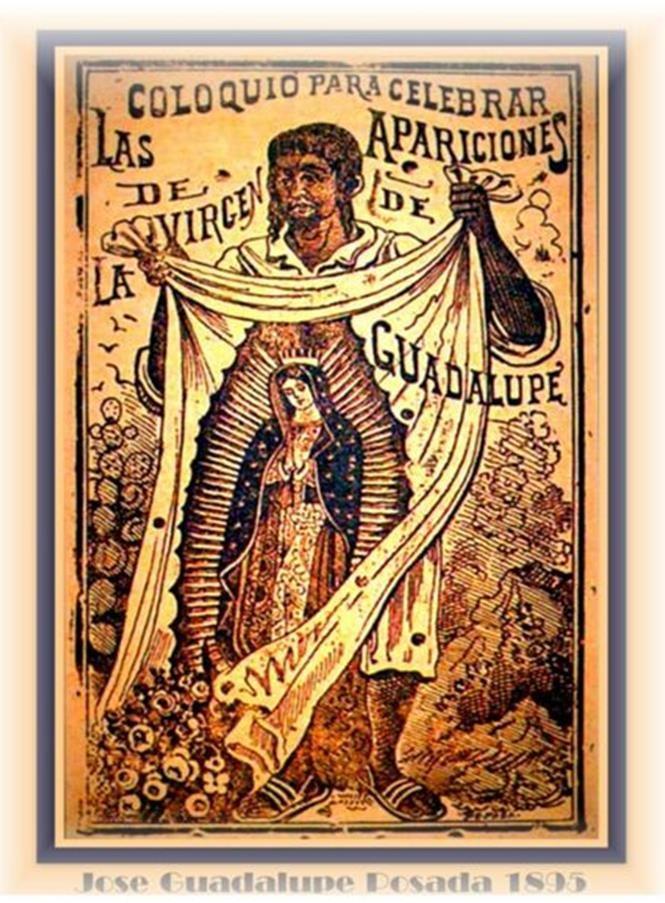

All the apologists, without excepting a single one, have fallen into an inexplicable mistake in so many men of talent, and that has been to constantly confuse the antiquity of the cult with the truth of the Apparition and miraculous painting on Juan Diego´s cloak. They have labored to prove the first (which no one denies, since it consists of irrefragable documents), insisting that the second was thereby proved, as if there were the slightest connection between the two. Joaquín García Icazbalceta, “Letter to bishop Pelagio Antonio Labastida”, No. 21.
At all stages, the Historic Commission had to refute difficult questions regarding Juan Diego´s holiness but then, after the beatification in 1990, his existence was seriously questioned. Apologetic responses were not new to the Guadalupan subject, ever since the eighteenth century when Juan Bautista Muñoz coupled with Teresa de Mier´s correspondence to him and the doubling down of the so-called “negative argument” by Joaquín García Icazbalceta and his peers “apparitionist” and “anti-apparitionist” literature flooded academia, and the “negative argument” thesis began to be restructured and augmented.
Icazbalceta accounted for the 1556 Proceedings, Suárez de Peralta´s Noticias, and the Juridical Proceedings of 1666 establishing a thesis that would be repeated through numerous authors in the following century reaching Rome in abundant letters through contemporary authors:
What is questioned is not whether the Virgin appeared to someone under the figure of the already existing image of Guadalupe; but if she appeared to Juan Diego in 1531 with the circumstances that are related, and in the end, she was imprinted on his tilma: that is, if the image we have is of heavenly origin. “Letter,” No. 47. Emphasis mine.

Art Historian Francisco de la Maza was one of the first authors to rework this precedent while launching an Indigenous substrate to it: “Apices and atoms are the popular Indigenous and mestizo legends first and then criollos, of the miracle of Tepeyac; […] Miguel Sánchez hears the tradition and writes it in its initial simplicity.”38 This was a move Teresa de Mier had surmised yet did not fully develop. Two decades later, Jacques Lafaye admits this essential claim in Quetzalcóatl y
38 Francisco de la MAZA, El guadalupanismo mexicano, México y lo mexicano 17, Mexico: Porrua y Obregón, 1953, p. 43.
Guadalupe (1974)39 and like De la Maza, excuses the extant sources that deal with an “apparition” clearly showing how all sixteenth-century sources deal with a miraculous advocation rather than one that appeared. 40
Jaques Lafaye considers that what was written in the seventeenth century has pre-Columbian bases: “The couple Quetzalcoatl-Tonantzin appears to have been one of the avatars of the universal dual principle, Ometeotl, in the Aztec theogony. However, only the late metamorphoses of the old Indian beliefs in the Creole thought of colonial Mexico interest us here.”41 In this regard, it is paramount to consider that modern scholarship considers that this dual god could have been a postColombian reworking.42 Additionally, we must note that Lafaye in a later writing attests the Nican Mopohua was written by Antonio Valeriano as a compilation of traditions.43
The crux of the matter lies in the configuration of the apparitionist history, i.e., whether the Nican Mopohua was composed in the sixteenth century or seventeenth century; it all boils down to whether Sánchez-Lasso wrote down a tradition that developed gradually or whether there already was a relación, a hidden manuscript from where
39 “Se dan todas las condiciones para suponer que el fervor guadalupanista, tanto de los indios (que sin duda veían a la vieja Toci bajo los rasgos de la Virgen María) como de los criollos deseosos de tener su propia patrona ligada al suelo de su nueva patria, aumentó después de 1556” (Jacques LAFAYE, Quetzalcóatl y Guadalupe: la formación de la conciencia nacional en México : abismo de conceptos: identidad, nación, mexicano, trans. Ida Vitale and Fulgencio López Vidarte, México: Fondo de Cultura Económica, 2015, p. 264).
40 MAZA, El guadalupanismo mexicano, pp. 19–20; Jacques Lafaye, Quetzalco?, pp. 264s.

41 Jacques LAFAYE, Quetzalcoatl and Guadalupe: The Formation of Mexican National Consciousness, 1531-1813, Chicago, IL: University of Chicago Press, 1987, 2, https://press.uchicago.edu/ucp/books/book/chicago/Q/bo27778696.html.
42 Richard HALY, “Bare Bones: Rethinking Mesoamerican Divinity,” History of Religions 31, no. 3 (1992): 269–304, https://doi.org/10.1086/463285.
43 Jacques LAFAYE, “Cuestionada Historicidad de Juan Diego” in Lourdes Celina VÁZQUEZ, Juan Diego ORTIZ ACOSTA, and Luis Rodolfo MORÁN QUIROZ, El Santo Juan Diego: historia y contexto de una canonización polémica, 1. ed., Guadalajara, Jalisco, México: Universidad de Guadalajara, 2006. He additionally claims that the Guadalupan story is a circumstantial invention of the environment, as others have been, and that Juan Diego was mythologized into a saint by Francisco de Florencia, just as Cabeza de Vaca was by the Jesuit priest Charlevoix in the eighteenth century.
they were based off. No author denies that there is Mexican Guadalupan evidence before 1648 as references abound.
The great debate lies in the date of composition of the relación, as Poole addresses in his bibliographical review of Brading’s book, “The author makes a fundamental error in not making a clear distinction between Guadalupe before Sánchez’s book and Guadalupe after that. Though the shrine, image, and devotion existed from the mid-sixteenth century, it was not until 1648 that the story of Juan Diego and the apparitions became associated with them.”44
The whole matter lies in the supposition that the Nican Mopohua is from the sixteenth century. In that case, all the Guadalupan references are read in the light of the apparitions to Juan Diego. If the Nican Mopohua is from the following century, then the Guadalupan Event developed not only with deferred elements (Image, history-tradition, devotion, hermitage), but the Image becomes “miraculous” by the Christian conversions themselves, not as the source of them. If this is the case, Juan Diego´s existence comes into direct conflict with history, as was contended in the canonization process.45
In 1981, Ernest Burrus published “The Oldest Copy of the Nican Mopohua”, showing that the famous section of Lasso de la Vega´s original publication, “Nican Mopohua”, in the Huey Tlamahuiçoltica was indeed not a seventeenth-century product. Two copies were found in the Lenox collection in the NYPL while seeking the original Mariano Cuevas said existed in a Washington D.C. archive. Although this could seem like a clear validation of sixteenth-century antiquity, more contemporary authors would assert that Lasso de la Vega was still the author of the famous Guadalupe apparition story.46 Yet at the time academia emphasized the weight of the Nican Mopohua as an account

44 Stafford POOLE, “Mexican Phoenix. Our Lady of Guadalupe: Image and Tradition, 1531-2000,” The Catholic Historical Review 87, no. 4 (2001): 773, https://doi.org/10.1353/cat.2001.0181.
45 Stafford POOLE, “History versus Juan Diego,” The Americas (Washington. 1944) 62, no. 1 (2005): 1–16, https://doi.org/10.1353/tam.2005.0133.
46 Cfr. Luis LASSO DE LA VEGA et al., The Story of Guadalupe: Luis Laso de La Vega’s Huei Tlamahuiçoltica of 1649, Stanford, Calif.; Los Angeles: Stanford University Press; UCLA Latin American Center Publications, University of California, Los Angeles, 1998.
that dated around the mid-sixteenth century. Did this mean, however, that Juan Diego existed?
While Lafaye offered a religious and sociological perspective to the Guadalupe Event, Mauro Rodríguez in his Guadalupe, historia o símbolo? (1980) offered a psychology of religion response to the Guadalupe phenomena which extended from an absent father-god and a present mother-goddess projected in Tonantzin Guadalupe to subtracting the anthropological value behind the apparition story. The Tower of Babel did not literally, or historically mean people were divided into languages in Babylon, but the story means pride separates humanity, Guadalupe, likewise, creates unity among peoples yet it is not a true historical account. Other sciences, like the historical one, would leave their mark as a greater impediment to the Cause.
Historian Edmundo O’Gorman´s Destierro de Sombras (1986) asserts that the Guadalupan tradition was born in the Nican Mopohua yet it does not have historical credibility as Antonio Valeriano wrote (in 1556 before the Bustamante-Montúfar conflict) this story for natives, in Nahuatl, to attest they are divinely favored by God. Valeriano created a story behind the Guadalupe image that some natives believed “appeared” in 1555-1556 (as an image recently placed in the Tepeyac hermitage); the erudite native sacralized the image with a written account saying it appeared to one of their own, Juan Diego in a not-so-remote past, 1531. Additionally, the Nican Mopohua Christianized and distinguished itself from any “idolatrous” remanent from the Tepeyac.47

Six years later, Richard Nebel´s Santa María Tonantzin, Virgen de Guadalupe: continuidad y transformación religiosa en México (originally published in German in 1992) studies the theological transformation spurred from Our Lady of Guadalupe and, her impact on the indigenous people and their pastoral life within the Church. His work emphasizes Our Lady of Guadalupe´s Nahua origins and literarily offers several versions and translations of the Nican Mopohua an effort José
47 Edmundo O’GORMAN, Destierro De Sombras. Luz En El Origen Del Culto De Nuestra Señora De Guadalupe, México: UNAM, Instituto de Investigaciones Históricas, 2001, pp. 43–61, http://archive.org/details/o-gorman-edmundo.-destierro-de-sombras.-luzen-el-origen-del-culto-de-nuestra-se_202108.
Luis Guerrero would complement.48 Finally, it is paramount to assert Nebel belittles the historicity question as it does not matter to him the human or divine provenance of the Image-cult.
Xavier Noguez in Documentos Guadalupanos (1993), a reworking of his 1985 thesis dissertation, was unable to confirm or deny O´Gorman’s assertions about the Nican Mopohua, or what Garibay believed about it.49 Noguez does not seem to concede the Nican Mopohua as a certain early source. Yet, his research brings to light a plethora of extant Guadalupe documents that would seem to contrast with Icazbalceta’s dictum of the “silence” of sources about an apparition. This would seem to be the case as he compiled several Guadalupe and Juan Diego’s sixteenth-century sources that include relevant indigenous annals.50 Noguez, however, would hypothesize that the “official version” of the Guadalupan apparition “history” has its origin primordially “in a group of collectively created traditions originating from several Indigenous contexts already acculturated into Christianity. The main traditions here studied were elaborated in a relatively long time, between 1521 and 1688.”51 His conclusion was incisive:
The apparitions of Our Lady of Guadalupe to Juan Diego in the Tepeyac cannot be proven through documents considered historical. But for the Indigenous people who lived after the conquest, the primary producers of the information about Guadalupe, “history” and what we have called “tradition,” in opposition to what Western European historiography does not consider veracious, were two necessary forms to conjugate […] the new ´reality´ that surrounded them.52

48 José Luis G. GUERRERO, El Nican Mopohua: un intento de exégesis, México: Universidad Pontificia de México, 1996 [Bibliotheca Mexicana].
49 The Nican Mopohua was a work composed by a Nahua group which included Valeriano as a main collaborator.
50 Xavier NOGUEZ, Documentos guadalupanos: un estudio sobre las fuentes de información tempranas en torno a las mariofanías en el Tepeyac, 1. ed., Sección de obras de historia, Toluca, Méx.: México, D.F.: El Colegio Mexiquense; Fondo de Cultura Económica, 1993), 47–57.
51 NOGUEZ, p. 185.
52 NOGUEZ, p. 190.
Noguez in other words says that for the Nahuas history and tradition worked together for knowledge production; it could even be fair to say that what the West considered a myth, the Nahua saw as an interwoven metaphysical reality. This claim, therefore, asserts how the Guadalupan story eventually became history.
A wave of scholarship, especially from the United States, began to look beyond the sixteenth-century (and the Nican Mopohua document) which had scarce foundations, and began to deal with Our Lady of Guadalupe as a religious symbol. William B. Taylor most notedly surveys the rise of this advocation and concludes, as he would continue to elaborate on the same thesis later, that Our Lady of Guadalupe is popular, but she is just one among many devotions. Her popularity was established in the second half of the eighteenth century as shown by baptismal records that use the name “Guadalupe.”53 James Lockhart would attest to the same regarding her popularity.54 Other more contemporary scholars would deal with this subject as well.55
In the same vein, Louis Burkhart in “The Cult of the Virgin of Guadalupe” (1993) acknowledges her stance á la Icazbalceta, asserting that “The legend did not originate in 1531, but neither was it simply the invention of the priests who prepared the editions of 1648 and 1649. Its actual origins, sometime during the intervening years, have remained obscure.”56 The anthropologist has a great deal of respect for the Image, meaning, the tradition, and oscillates in pinpointing its origin as being Nahua, Spanish, or both. In Before Guadalupe (2001), a survey of Marian sources in plays before 1620, Burkhart tends to believe that the
53 William B. TAYLOR, “The Virgin of Guadalupe in New Spain: An Inquiry into the Social History of Marian Devotion,” American Ethnologist 14, no. 1 (1987): 16.

54 James LOCKHART, The Nahuas after the Conquest: A Social and Cultural History of the Indians of Central Mexico, Sixteenth through Eighteenth Centuries, Stanford, Calif.: Stanford University Press, 1992, p. 242, http://www.gbv.de/dms/sub-hamburg/113059353.pdf.
55 Cornelius Conover, “Reassessing the Rise of Mexico’s Virgin of Guadalupe, 1650s–1780s,” Mexican Studies/Estudios Mexicanos 27, no. 2 (2011): 251–79, https://doi.org/10.1525/msem.2011.27.2.251.
56 Louis BURKHART, “The Cult of the Virgin of Guadalupe” in Miguel LEÓN-PORTILLA and Gary H. GOSSEN, South and Meso-American Native Spirituality: From the Cult of the Feathered Serpent to the Theology of Liberation, World Spirituality; v. 4, New York: Crossroad, 1993, p. 200.
origin of the cult is a “product of pious creativity,”57 more Spanish but still embedded with many Nahua traits.
William Taylor and Burkhart do not seem to consider Juan Diego a historic character. Additionally, Burkhart´s beliefs regarding Antonio Valeriano are that “no reliable documentation exists to support his connection with the Guadalupe cult,”58 while Taylor in his Magistrates of the Sacred: Priests and Parishioners in Eighteenth-Century Mexico (1996) extensively covers the patterns of expansion in the popularity of Our Lady of Guadalupe, patterns that showcase a date far beyond the mid-sixteenth century.59

It would be Stafford Poole who would put the last nail in the coffin in his work Our Lady of Guadalupe: the Origins and Sources of a Mexican National Symbol, 1531-1797. His main thesis is that of Icazbalceta, the “cult legend,” with an “Indian protagonist” appeared in 1648 and before then “nothing had been recorded.” The Guadalupe tradition had to be distinguished between the “devotion at the Tepeyac” and the “story of the apparitions”; the latter was dated to the mid-seventeenth century. Poole thoroughly analyzed the most important sources in the first two centuries of devotion to conclude there is dissonance between the apparition story and devotion-cult. A miraculous image is not the same as one that appeared.
Poole was at the forefront of pointing out to Rome how contemporary scholarship was not being considered. In 1998 this was especially the case when he co-authored The Story of Guadalupe: Luis Laso de la Vega's Huei tlamahuiçoltica of 1649 where Lockhart, Sousa, and he asserted the Nican Mophua was a seventeenth-century production. It is worth noting that in James Lockhart´s Nahuas After the Conquest (1992), he analyses Lasso de la Vega’s publication and it contrasts with his co-authorship.60 Lastly, Miguel León-Portilla in his Tonantzin
57 Louise M. BURKHART, Before Guadalupe: The Virgin Mary in Early Colonial Nahuatl Literature, Albany, NY: Institute for Mesoamerican Studies, 2001, p. 2.
58 Louis BURKHART, “The Cult of the Virgin of Guadalupe,” p. 216.
59 William B. TAYLOR, Magistrates of the Sacred: Priests and Parishioners in EighteenthCentury Mexico (Stanford, California: Stanford University Press, 1996), 287, http://catdir.loc.gov/catdir/toc/cam027/95022982.html.
60 “The story proper is in such fluent and idiomatic Nahuatl that Lasso de la Vega would have had to possess very unusual language gifts to have written it himself unless
Guadalupe. Pensamiento náhuatl y mensaje cristiano en el “Nican Mopohua” (2000) the great Nahua scholar attributes Valeriano as the author of the Nican Mopohua. 61
also,lly, one year before the canonization of Juan Diego, Cambridge professor of Latin American History, David Brading released his Mexican Phoenix whose approach was not merely historic but also doctrinal and ritualistic, explaining the meaning behind the Guadalupan tradition. After covering the religious psychology of imagery, especially in the Eastern church, he proceeds to present the whole historicity of Our Lady of Guadalupe through the known documents especially emphasizing the sermons about her, retracing his 1994 publication Siete sermons guadalupanos.

His work concludes with a broad stroke of the controversies of the Canonization process, detailing the most recent scholarship on the Guadalupe-Juan Diego subject. The last remarks of his work juxtapose the Church´s tradition of how divine scripture is interpreted and how the Nican Mopohua, mutatis mutandis, is divinely inspired bearing theological truths. The Latin Americanist, probably inspired by De la Maza´s hagiographic assertation of Miguel Sánchez as a Guadalupe Gospel writer, claims that “if these principles of interpretation [like those of Dei Verbum] be applied to the apparition narrative composed
he was guided by an already existing model; indeed, the tale itself is so smooth that it gives the impression of having been through the polishing process of frequent telling by various narrators. The entire Lasso de la Vega publication is in excellent Nahuatl. Lasso de la Vega specifically says that he wrote it, but since Spanish ecclesiastics had long been wont to ignore the fact that their indigenous aides actually put the texts they published into Nahuatl, there is nothing to prevent us from assuming the existence of a Nahua ghostwriter who could have had much latitude, writing as he pleased, or alternatively could have been narrowly restricted to translating Lasso de la Vega’s Spanish or correcting his Nahuatl drafts. On the other hand, we cannot be absolutely sure any such figure was involved. To me, the introduction and appendix have the flavor of translations from Spanish, while the story proper does not.” LOCKHART, The Nahuas after the Conquest, 250.
61 “Valeriano compondría entonces su relato, a la vez de gran fuerza teatral, en torno a un indio macehual, hombre del pueblo, cuyo nombre hubo de dar. De no haber existido éste, su relato corría el peligro de ser tenido desde un principio como mera fantasía” (Miguel LEÓN-PORTILLA, Tonantzin Guadalupe: pensamiento náhuatl y mensaje cristiano en el “Nican mopohua,”, México: Fondo de Cultura Económica, 2013 [Sección de obras de antropología] 33.
by Sánchez, then it is clear that his primary purpose was theological and that historical facts were of little concern to him.”62 He does not dismiss Juan Diego could have existed, but asserts there is no strong evidence.
The pontifical visits of John Paul II to Mexico cleared the way for Juan Diego to reach the status of Blessed. This occurred despite the Commission not fully answering many of these studies that had been published before the beatification process´ completion on May 6, 1990. With the canonical process still on its way, the academic waters were stirred, especially, as we have seen, as historical doubts were raised about the existence of the humble Mexican Indigenous man. Rome henceforth was made aware of these impediments and acted accordingly.

José Luis Guerrero’s Los dos mundos de un indio santo: cuestionario preliminar de la beatificación de Juan Diego (1991) (like Ramón Sánchez Flores’ Juan Diego, personalidad) deals with how the seer would have lived and believed before the Conquest. Guerrero complements his study with Juan Diego´s philosophical and theological shift paradigm after converting and witnessing Our Lady of Guadalupe appeared before him. This work complemented and answered what Rome had sought: the most informed account of the neophyte´s ecology: the environment or what is the same, what was Juan Diego´s world.63 Los dos mundos was published after the beatification process, one that seemingly had no deterrence as the seer´s intercession miracle occurred and was approved shortly after the beatification Mass. With the arrows and shields put aside, when there was peace then to Rome comes what to Rome goes.
62 D. A. BRADING, Mexican Phoenix: Our Lady of Guadalupe: Image and Tradition across Five Centuries, Cambridge, UK: Cambridge University Press, 2001, p. 367, http://catdir.loc.gov/catdir/samples/cam031/00063061.html.
63 Although the Nahua content is dated, this work is a magnificent starting point for any Guadalupan study as it quite literally is a dialogue, Q&A, that details the preliminary concerns, questions and explanations of the Nahua world Juan Diego lived in before the so-called Conquest. The Delegate Judge enquires about all the Nahua worldview embedded, for example in the apparition dialogues.
No one knows whether it was a personal resentment as rumors of his possible bishopric fell, but the once loyal Abbot of the Basilica of Guadalupe, Msgr. Schulengburg recanted his devotion to the Guadalupe Encounter by denying the existence of Juan Diego. For this reason, he was asked to resign in 1996.64 Added to this scandal, the beatification team had rested on their laurels as some of their proceedings were irregular, especially in the conduction of historical research. In the last decade, the Postulator for the Cause changed a couple of times, a tendency that did not change when Norberto Rivera Carrera took the miter of the See of Mexico City in 1995.65
Thus, the academic and media literature ran back and forth with answers to the questions presented to the Dicastery for the Causes of Saints. Father Stafford Poole “sent his letters on December 24 and 27, 1997. He also sent a copy of his book on the history of Guadalupe.”66 This book was recommended by the former Abbot in letters to the Vatican Secretariat of State as it dismantled the Positio. 67 The following year, the authors Xavier Noguez, Stafford Poole, and Rafael Tena sent a letter to the Congregation of Saints stating that their research, together with that of Richard Nebel, proved that the Guadalupan cult could be traced back to the sixteenth century, but the first published reference dated to 1648. In October 1998, this same group of scholars sent another letter noting that the Historical Commission only
64 "[Interviewer:] So what about Juan Diego, did he exist? - It is a symbol, not a reality [...] this beatification is a recognition of worship. It's not the recognition of the character's real, physical existence." Guillermo Schulenburg Prado, Memoirs of the "Last Abbot of Guadalupe", Mexico: M.A. Porrúa, 2003, p. 236.

65 “El 24 de junio de 1999, fecha en la que se instituyó en México la Postulación General Mexicana para las Causas de Canonización del país, el Cardenal Norberto Rivera Carrera, arzobispo primado de México, pasó la Causa del Beato Juan Diego a la dicha Postulación quedando como postulador de la Causa el sacerdote mexicano de Guadalajara (México) Dr. Oscar Sánchez Barba; más tarde tomaría la dirección de la postulación el sacerdote de la diócesis de México Dr. Eduardo Chávez Sánchez.” GONZÁLEZ, “JUAN DIEGO CUAUHTLATOATZIN; Procesos de Beatificación y de CanonizaciónDicionário de História Cultural de La Iglesía En América Latina.”
66 Stafford POOLE, The Guadalupan Controversies in Mexico, Stanford, California: Stanford University Press, 2006, p. 160.
67 David A. BRADING, La canonización de Juan Diego, Centzontle, México: Fondo de Cultura Económica, 2010, pt. II, p. 58.
consulted historians in favor of Guadalupanism.68 They also asserted that when the Historic Commission answered their works, they were not given the right to reply.
By that point, Rome had asked for the canonization team to regroup yet again. This was less than two years before Juan Diego was canonized. Eduardo Chavez, Fidel Gonzalez, and José Luis Guerrero, the only member that was kept from the previous process and updated the former members, all published a response to many of the allegations in book format: El encuentro de la Virgen de Guadalupe y Juan Diego (1999). This was coupled with El nican mopohua: un intento de exégesis (1996) where José Luis Guerrero responded to Poole´s Our Lady of Guadalupe in a 161-page appendix.

Subsequent studies arose from this work in the following years after the canonization. The Basilica through Dr. Arturo Rocha published the most valuable documents in the Boletín Guadalupano, an effort that made the facsimile prints available to the wider public. This effort gave way to two important academic works by the same author, books indispensable for any Guadalupe scholar: Monumenta guadalupensia mexicana: colección facsimilar de documentos guadalupanos del siglo XVI (2010) and La llave de Guadalupe (2018). 69 In the former, a facsimile and source analysis is made of the extant sixteenth-century Guadalupe sources while the latter systemically deals with the Nahua meaning behind each part of the Image of Our Lady of Guadalupe.
The response to El encuentro came from a Mexican voice. Manuel Olimón, professor of history at the Pontifical University of Mexico, said that it was not a serious or new study and did not prove the historical existence of the neophyte. Historian Francisco Miranda Godínez also criticized their work asserting they were not able to separate the cult from the apparition story and that despite such an
68 BRADING, pt. II, 58.
69 Arturo ROCHA, Monumenta guadalupensia mexicana: colección facsimilar de documentos guadalupanos del siglo XVI custodiados en México y el mundo, acompañados de paleografías, comentarios y notas, 1. ed., México, D.F.: Insigne y Nacional Basílica de Santa María de Guadalupe, 2010; Arturo ROCHA, La llave de Guadalupe, Ciudad de México: Editorial Miguel Ángel Porrúa, 2018, https://public.ebookcentral.proquest.com/choice/PublicFullRecord.aspx?p=6776770.
extensive bibliography, no innovative point was presented.70 The postulation team answered to the Vatican with no obligation to anyone else; in addition to the historical recourses, the Cause was backed by the voice of the people and the Holy See believed it had enough evidence to proceed, the date of the canonization of the seer Juan Diego was set.
Why then did the Pope approve the canonization process? It is paramount to note that just in six years, the previous ones to the canonization, two unprecedented sources saw the light of day. Codex 1548 or Codex Escalada and the original Juridical Proceedings of 1666. On the former, we will say that it was said to be a sixteenth-century parchment containing two images of Juan Diego kneeling before Our Lady of Guadalupe, one during the first apparition, the second when she imprints herself in his cloak. It is controversial because of its provenance (it was found inside an old book in a street market, not in a secured archive), its composition (ink colors), and it contains Sahagún´s signature, who was avidly suspicious of the Tepeyac cult. David Brading,71 Stafford Poole,72 and Rafael Tena73 proved the codex to be fake. It was discovered in 1995 and received widespread public attention in 1997, at the height of the canonization controversies while several letters were being sent to Rome to stop the Process.

The second source that was not available before the beatification was the original copy of the Juridical Proceedings of 1666. This set of testimonies had not been available but by a 1737 copy that was sent to Rome to process Mass and Office for Our Lady of Guadalupe. The Proceedings were a set of juridical inquiries into centenarian Cuautitlán witnesses who swore that when they were young their (also really) old relatives told them about their experience with Juan Diego himself. The common objection is the heuristic finding of such witnesses who, more than 130 years after the attested event, account for such
70 POOLE, The Guadalupan Controversies in Mexico, p. 166. Also see: Efemérides Mexicana, no. 51 (1999).
71 BRADING, La canonización de Juan Diego, Pt. II, 63.
72 POOLE, Our Lady of Guadalupe, 179s.
73 Manuel OLIMÓN NOLASCO, La búsqueda de Juan Diego: México: Plaza y Janés, 2002, 125s.
proximity to the holy neophyte, not to mention the number of elders surpassing the hundred years of age in one single pueblo. The original source was not available, which did not bring appeasement to Rome. In 2001, a year before Juan Diego was canonized, mislabeled in the archive of the Basilica of Our Lady of Guadalupe, Eduardo Chávez, the last Postulator for the Cause, found it while searching for another source. It is interesting, however, to point out that Stafford Poole back in 1995 in his book Our Lady quite literally said “The most important repository, of course, is the archive and library of the basilica of Guadalupe in Mexico City. It is truly regrettable that it is closed to researchers at the present time. Among other items, it contains the original of the capitular inquiry of 1666.”74
In a matter of years, both Juan Diego´s existence and holiness were reaffirmed with these two additional sources. The postulators for the cause had been answering all the letters sent to Rome so the Dicastery finally decided to present the case before His Holiness who approved it and set the date to go to Mexico for what would be his last visit. On July 31, 2002, the first Indigenous man was officially raised to the altars, worthy of veneration as he could intercede in heaven before God.
From then on, a stage in the history of Our Lady of Guadalupe concluded. The relevance was not only historical, but theological for Catholicism: if the Pope canonized an Indigenous person imposed on the Guadalupan tradition or a fictitious creation within a catechetical instruction, play, or another preaching device, then the dogma of papal ineffability was at stake, and with it, that of other dogmas proclaimed ex cathedra. 75 This was informed by Manuel Olimón and a doctor in

74 POOLE, Our Lady of Guadalupe, 284 (1995 ed.), p. 301.
75 Certainly, what differentiates Christianity from any other religion is the audacity to proclaim historical events as truths of faith; if these dogmas were to be proven false, especially Christological ones like the resurrection, this would lead to the breakdown of the religion itself. The dogmas that have not been proclaimed under the council and by power of the Petrine authority are called ex cathedra. The former abbot went so far as to say on this topic, “if [the pope] canonized Juan Diego then it would be very serious because at that moment the theologians would have to study whether the Pope could make a mistake in a canonization.” Interview, “El milagro de Guadalupe. Entrevista con Guillermo Schulenburg”, Ixtus, año 3, no. 15, 1995, in SCHULENBURG PRADO, Memorias del “ultimo Abad de Guadalupe,” p. 338. Translation mine.
Canon Law Carlos Warnholtz to the Congregation for the Causes of Saints.
The existence debate was further analyzed once Juan Diego was proclaimed holy. Following the canonization of the seer, a handful of historians addressed their stance on the new saint. Poole published in 2005 “History versus Juan Diego” the year before releasing the historiography of the Guadalupan apologetic debates in The Guadalupan controversies in Mexico. Other historians like Antonio Rubial and Jacques Lafaye shared their work regarding this decision in El Santo Juan Diego: historia y contexto de una canonización polémica (2006).
Finally, three special references are La búsqueda de Juan Diego published two months before the Canonization by Manuel Olimón who edited all the letters sent to Rome. These letters came from prominent historians who argued Juan Diego´s existence was not all too clear and other scholars´ dictum regarding this matter. The second reference worth citing is Guillermo Schulenburg Prado´s Memorias del “ultimo Abad de Guadalupe” (2003). The former Abbot offers insights into how he ran the shrine, constructed the new sanctuary, and his beliefs regarding the historicity of Juan Diego. Finally, David Brading complemented his work Mexican Phoenix with La canonización de Juan Diego in 2010 where he also covered the canonization controversy and gave his historical dictum on the seer´s non-existence.

If the apparition story was essentially composed in the seventeenth century, then any historical data about the seer would be understood as another Juan Diego, a person from whom the tradition was inspired or, if there is enough hard data, this position should be reconsidered as historian Timothy Matovina argued by using only the same documents Poole dubbed valid before 1648 when Miguel Sánchez published the first piece on Our Lady of Guadalupe.76
In this vein, two types of thematic evidence must be discussed: those that deal only with the Virgin of Guadalupe and those that allude to
76 Timothy MATOVINA, “The Origins of the Guadalupe Tradition in Mexico,” The Catholic Historical Review 100, no. 2 (2014): 243–70, https://doi.org/10.1353/cat.2014.0136.
the apparitions to Juan Diego. A few sources fall into this second category and will be discussed in a separate work. These sources cut to the meat of the matter. Despite not presenting the most up-to-date Juan Diego bibliography here, it is important to mention that apparitionists or anti-apparitionists, or any other grouping that can be created, most of the authors maintain serene respect for the devotion as the majority conclude their works by referring the substantial spiritual impact the Virgin of Guadalupe has had. In the case of the anti-apparitionists, although they do not agree with the factual tradition, most do admit that devotion molds hearts. It can be said that there are anti-apparitionists, but few anti-Guadalupans.

The excursion through the documents and the hermeneutical relationships that are made based on idiosyncratic factors affect and shape how the Guadalupan Event is understood, especially in the exoteric world, with the faith of the people, which is something precious. Therefore, returning to the esoteric/academic sphere (which does not exclude the faith of researchers since many of us are priests and/or scholars) the documentary support became more relevant to understanding a central figure whose questioned existence raised doubts about the foundational story of Christianity in the Americas.
This work has presented the history of the efforts to bring about the canonization of Juan Diego, the ideological social war in Mexico77 where the Church responded to the State´s imitatio religionis with the reaffirmation of the country´s religious identity, especially in the figure of the layman Juan Diego. We also saw the intriguing scholarship that dealt with the historicity of the neophyte and concluded that the most thorough research on the Juan Diego sources ought to bring about clarity on Rome´s Spirit-guided decision. Many of these efforts have been ongoing, some of its fruits are UIC´s Colegio de Estudios Guadalupanos, UPAEP´s Centro de Estudios Guadalupanos, ISEG, and newly formed ones like Marian Messengers in the USA.
It is, finally, paramount to mention that no apparition or private revelation is a dogma of faith, that is, any Catholic can decide not to believe them since they do not add to the deposit of faith, but rather complement it. Even so, the canonized sainthood of a person is indeed a
77 This social unrest seemed to be settled especially after the 70-year single-party stint.
proclamation of the universal Church held as dogma. It is therefore vital to know the process of the historical discernment that led to the proclamation of Juan Diego as a saint since history is the only science that can speak of such marvelous events a posteriori. Two decades have passed since the controversial Canonization of Juan Diego Cuauhtlatoatzin, the holy seer of the Virgin of Guadalupe. The results both in terms of increased devotion to him and recognition as a seer have been demonstrated through social studies that reflect the increase of lay preparation.78 This present work has reviewed the most essential steppingstones to the path Juan Diego took to the altars; on our (consecrated-lay) journey towards the process to holiness where dialogue and faith play a prominent role, Juan Diego has led the way as a witness to God´s mercy. His heroic example is known to us in the adventurous step he took on that early December morning, 1531 when he received a vision that changed an entire people.
BRADING, D. A., Mexican Phoenix: Our Lady of Guadalupe : Image and Tradition across Five Centuries. Cambridge, UK: Cambridge University Press, 2001. http://catdir.loc.gov/catdir/samples/cam031/00063061.html.
BRADING, D. A., Mexican Phoenix: Our Lady of Guadalupe : Image and Tradition across Five Centuries. Cambridge, UK: Cambridge University Press, 2002.
BRADING, David A., La canonización de Juan Diego. Centzontle. México D.F.: FCE - Fondo de Cultura Económica, 2010.

BURKHART, Louise M., Before Guadalupe: The Virgin Mary in Early Colonial Nahuatl Literature. Albany, NY: Institute for Mesoamerican Studies, 2001.
CARRERA, Norberto Rivera, Juan Diego: el águila que habla Plaza y Janés, 2002.
CHÁVEZ SÁNCHEZ, Eduardo, La verdad de Guadalupe. México: Instituto superior de estudios Guadalupanos, 2012.
78 Chihagi Nakamura, “Despues de la Canonizacion de San Juan Diego, movimiento de la iglesia y respuesta de los peregrinos” (Section 13, The Proceedings of the sixtyseventh annual convention of the Japanese Association for Religious Studies), Journal of religious studies 82, no. 4 (2009): 1318–20, https://doi.org/10.20716/rsjars.82.4_1318.
CONOVER, Cornelius, “Reassessing the Rise of Mexico’s Virgin of Guadalupe, 1650s–1780s.” Mexican Studies/Estudios Mexicanos 27, no. 2 (2011): 251–79. https://doi.org/10.1525/msem.2011.27.2.251.
GONZÁLEZ, Fidel, “JUAN DIEGO CUAUHTLATOATZIN; Procesos de Beatificación y de Canonización - Dicionário de História Cultural de La Iglesía En América Latina.”
Accessed July 31, 2024. https://www.dhial.org/diccionario/index.php?title=JUAN_DIEGO_CUAUHTLATOATZIN;_Procesos_de_beatificaci%C3%B3n_y_de_canonizaci%C3%B3n#cite_ref-7.
GUERRERO, José Luis G., El nican mopohua: un intento de exégesis. Bibliotheca Mexicana. México: Universidad Pontificia de México, 1996.
HALY, Richard, “Bare Bones: Rethinking Mesoamerican Divinity.” History of Religions 31, no. 3 (1992): 269–304. https://doi.org/10.1086/463285. HathiTrust. “El Tepeyac V.1 NO.4-10 1926.”
Accessed August 2, 2024.
https://hdl.handle.net/2027/txu.059173023892359?urlappend=%3Bseq=6. “HNDM-Publicación.” Accessed July 26, 2024. https://www.hndm.unam.mx/consulta/publicacion/visualizar/558075be7d1e63c9fea1a312?pagina=558a34287d1ed64f16a10244.
LAFAYE, Jacques, Quetzalcóatl y Guadalupe: la formación de la conciencia nacional en México : abismo de conceptos : identidad, nación, mexicano. Translated by Ida Vitale and Fulgencio López Vidarte. Fondo de Cultura Economica / Mexico, 2015.
LAFAYE, Jacques. Quetzalcoatl and Guadalupe: The Formation of Mexican National Consciousness, 1531-1813. Chicago, IL: University of Chicago Press, 1987.
https://press.uchicago.edu/ucp/books/book/chicago/Q/bo27778696.html.

LASSO DE LA VEGA, Luis, Lisa SOUSA, Stafford POOLE, James LOCKHART, and Miguel SÁNCHEZ LÓPEZ, The Story of Guadalupe: Luis Laso de La Vega’s Huei Tlamahuiçoltica of 1649 Stanford, Calif.; Los Angeles: Stanford University Press ; UCLA Latin American Center Publications, University of California, Los Angeles, 1998.
LEÓN-PORTILLA, Miguel, and Gary H. GOSSEN. South and Meso-American Native Spirituality: From the Cult of the Feathered Serpent to the Theology of Liberation. World Spirituality ; v. 4. New York: Crossroad, 1993.
LEÓN-PORTILLA, Miguel, Tonantzin Guadalupe: pensamiento náhuatl y mensaje cristiano en el “Nican mopohua.” Sección de obras de antropología. México D.F.: FCE - Fondo de Cultura Económica, 2013.
LOCKHART, James, The Nahuas after the Conquest: A Social and Cultural History of the Indians of Central Mexico, Sixteenth through Eighteenth Centuries. Stanford, Calif.: Stanford University Press, 1992. http://www.gbv.de/dms/sub-hamburg/113059353.pdf.
LÓPEZ BELTRÁN, Lauro, La historicidad de Juan Diego y su posible canonización. 1. ed. Obras guadalupanas de Lauro López Beltrán. México: Editorial Tradición, 1981.
LUNA QUINTANA, Citlali, “La Virgen Heróica En El Poeticum Viridarium... de José López de Avilés.” Boletín Del Colegio de Estudios Guadalupanos 2, no. 3 (June 2022).
MANRÍQUEZ Y ZARATE, José de Jesús, and Lauro LÓPEZ BELTRÁN, Quién fué Juan Diego. 1. ed. Colección Cincuentenario del movimiento actual pro canonización de Juan Diego. Iztacalco: Tradición, 1989.
MATOVINA, Timothy, “The Origins of the Guadalupe Tradition in Mexico.” The Catholic Historical Review 100, no. 2 (2014): 243–70. https://doi.org/10.1353/cat.2014.0136.
MAZA, Francisco de la, El guadalupanismo mexicano. México y lo mexicano 17. Mexico: Porrua y Obregón, 1953.
NAKAMURA, Chihagi, “Después de la Canonizacion de San Juan Diego, movimiento de la iglesia y respuesta de los peregrinos (Section 13,The Proceedings of the sixty-seventh annual Convention of the Japanese Association for Religious Studies)”, Journal of religious studies 82, no. 4 (2009): 1318–20. https://doi.org/10.20716/rsjars.82.4_1318.
NOGUEZ, Xavier, Documentos guadalupanos: un estudio sobre las fuentes de información tempranas en torno a las mariofanías en el Tepeyac. 1. ed. Sección de obras de historia. Toluca, Méx. : México, D.F.: El Colegio Mexiquense ; Fondo de Cultura Económica, 1993.

O'GORMAN, Edmundo, Destierro De Sombras. Luz En El Origen Del Culto De Nuestra Señora De Guadalupe. UNAM, Instituto de Investigaciones Históricas, 2001. http://archive.org/details/o-gorman-edmundo.-destierro-desombras.-luz-en-el-origen-del-culto-de-nuestra-se_202108.
POOLE, Stafford, “History versus Juan Diego.” The Americas (Washington. 1944) 62, no. 1 (2005): 1–16. https://doi.org/10.1353/tam.2005.0133.
POOLE, Stafford, “Mexican Phoenix. Our Lady of Guadalupe: Image and Tradition, 1531-2000.” The Catholic Historical Review 87, no. 4 (2001): 773–77. https://doi.org/10.1353/cat.2001.0181.
POOLE, Stafford, The Guadalupan Controversies in Mexico. Stanford, California: Stanford University Press, 2006.
ROCHA, Arturo, La llave de Guadalupe. Ciudad de México: Editorial Miguel Ángel Porrúa, 2018. https://public.ebookcentral.proquest.com/choice/PublicFullRecord.aspx?p=6776770.
ROCHA, Arturo, Monumenta guadalupensia mexicana: colección facsimilar de documentos guadalupanos del siglo XVI custodiados en México y el mundo, acompañados de paleografías, comentarios y notas. 1. ed. México, D.F.: Insigne y Nacional Basílica de Santa María de Guadalupe, 2010.
SÁNCHEZ FLORES, Ramón, Juan Diego, personalidad histórica de un pobre bienaventurado: estudios y documentos. 1a ed. NYDH monografías históricas. México: Noticias y Documentos Históricos, Comisión de Historia de la Federación de los Oratorios de San Felipe Neri, 1981.
SCHULENBURG PRADO, Guillermo. Memorias del “ultimo Abad de Guadalupe.”
México: M.A. Porrua, 2003.
Segundo congreso catolico de Mexico y primero mariano celebrado en Morelia del 4 al 12 de octubre de 1904. Talleres Tip. de Agustin Martinez Mier, 1905.
TAYLOR, William B. Magistrates of the Sacred: Priests and Parishioners in Eighteenth-Century Mexico. Stanford, California: Stanford University Press, 1996. http://catdir.loc.gov/catdir/toc/cam027/95022982.html.
TAYLOR, William B., “The Virgin of Guadalupe in New Spain: An Inquiry into the Social History of Marian Devotion.” American Ethnologist 14, no. 1 (1987): 9–33.
Un Sacerdote de la Compania de Jesus. Historia de la aparicion de la Sma. Virgen Maria de Guadalupe en Mexico: desde el año de MDXXXI al de MDCCCXCV por un sacerdote de la compañia de Jesus. Con licencia de la Autoridad Eclesiastica. México: Tip. y Lit. “La Europa” de Aguilar y Cía, 1897.

VÁZQUEZ, Lourdes Celina, Juan Diego ORTIZ ACOSTA, and Luis Rodolfo MORÁN QUIROZ, El Santo Juan Diego: historia y contexto de una canonización polémica. 1. ed. Guadalajara, Jalisco, México: Universidad de Guadalajara, 2006.


Dr. David Sánchez Sánchez†
ABSTRACT: La búsqueda documental de palabras directas de Fray Juan de Zumárraga asociadas con el Acontecimiento Guadalupano siempre ha generado múltiples preguntas muchas veces sin respuestas. En el presente texto analizamos el llamado Códice o Documento de Huejotzingo en un trabajo colaborativo entre la Dra. María Josefa Sanz Fuentes (Catedrática de paleografía y diplomática de la Universidad de Oviedo, España) y su servidor en el Centro de Estudios Guadalupanos (CEG) de la Universidad Popular Autónoma del Estado de Puebla (UPAEP).
PALABRAS CLAVE: Acontecimiento guadalupano, Fray Juan de Zumárraga, firma, holografía, aparición.
* Articulo redactado a petición expresa del editor del Boletín del COLEG
† Director de la Facultad de Humanidades y Presidente del Centro de Estudios Guadalupanos de la Universidad Popular Autónoma del Estado de Puebla, México (UPAEP. CEG UPAEP).
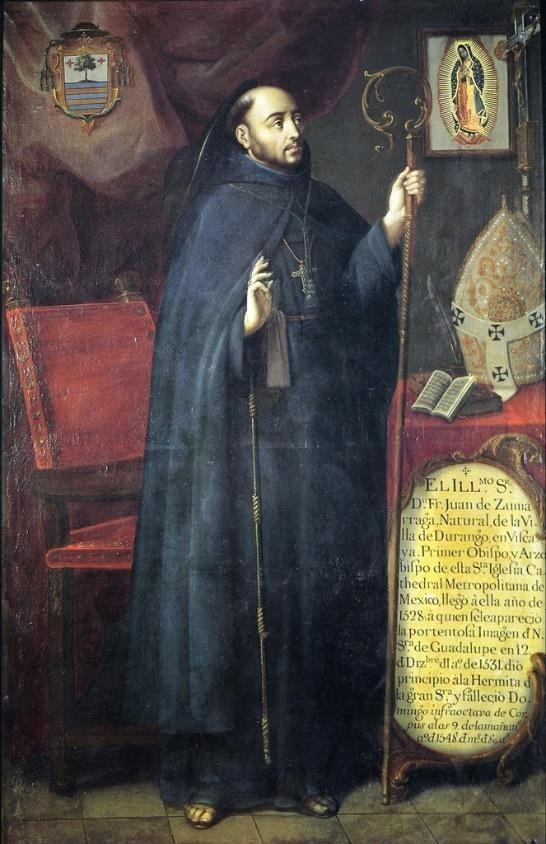

La búsqueda documental de palabras directas de Fray Juan de Zumárraga asociadas con el Acontecimiento Guadalupano1 siempre ha generado múltiples preguntas muchas veces sin respuestas.
En el presente texto analizamos el llamado Códice o Documento de Huejotzingo en un trabajo colaborativo entre la Dra. María Josefa Sanz Fuentes (Catedrática de paleografía y diplomática de la Universidad de Oviedo, España) y su servidor en el Centro de Estudios Guadalupanos (CEG) de la Universidad Popular Autónoma del Estado de Puebla (UPAEP). Dicho documento que está fechado en México el 2 de noviembre de 1535 siendo una carta manuscrita supuestamente realizada por Fray Juan de Zumárraga dirigida al también franciscano Fray Toribio de Benavente, Motolinía.
¿Es auténtico este documento? ¿Por qué existe en la firma una clara diferencia con las registradas por Juan de Zumárraga?

Para una mejor comprensión, comenzaremos con la transcripción de dicho documento:
1 Fidel GONZÁLEZ FERNÁNDEZ, Guadalupe Pulso y Corazón de un Pueblo, Madrid: Ediciones Encuentro, 2004.
Jesus, María, José y Phrancisco.
México y noviembre 2 de 1535
Hermano mío en nuestro seráfico padre san Francisco.
Doy gracias a Dios nuestro señor porque acabaron bien el capítulo en esa santa casa. Saludo a nuestros hermanos en nuestro señor Jesucrhristo porque nos phavorece y nos ayuda con su santa gracia, porque cada día vemos los phavores que nos dispensa en la conversión de los gentiles y pecadores, con la aparición de María santísima de Guadalupe, que ha traedo a la conversión a tantos de la idolatría. Esta madre de Dios e nuestra madre des que a […] //1v en el nuestro oratorio e agora en la santa catedral, se están phaciendo grandes e muchos milagros de alma e de cuerpo. Ya está acabada la capilla del cerro de Tepeyacatl para colocar a la Virgen santísima, e mi mayor deseo es que vuestra paternidad muy reverendísima me acompañe juntamente con los prelados que agora hoviérede en el convento para pasar la sagrada imagen a la dicha capilla e nos acompañar tanvién los hermanos fray Martín de La Coruña, fray Antonio de Segovia e fray Bernardo, que agora están en esa santa casa.
No se olvide de pedir a Dios por nuestro hermano fray Martín de Valencia. Espero las letras de vuestra paternidad muy reverendísima para disponer el día en que havremos de //2r phacer la dicha traslación. Me encomiendo a sus oraciones e de todo corazón lo vendice su hermano en Jesuchristo
Fray Juan, obispo de México (R).
Muy reverendo Padre General e Padre Fray Toribio de Venavente. Huexotrinco [sic]2 .

2 Transcripción del Códice de Huejotzingo realizado en colaboración entre la Dra. María Josefa Sanz Fuentes (Catedrática de paleografía y diplomática de la Universidad de Oviedo, España) y el Dr. David Sánchez Sánchez (Director de la Facultad de Humanidades y Presidente del Centro de Estudios Guadalupanos de la Universidad Popular Autónoma del Estado de Puebla, México).
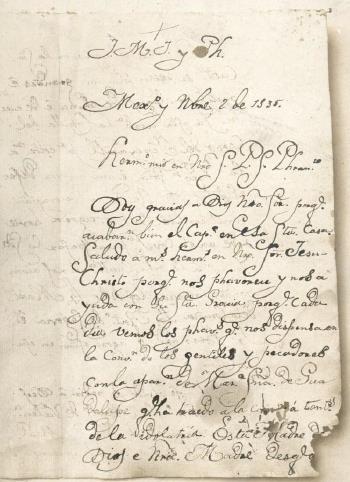
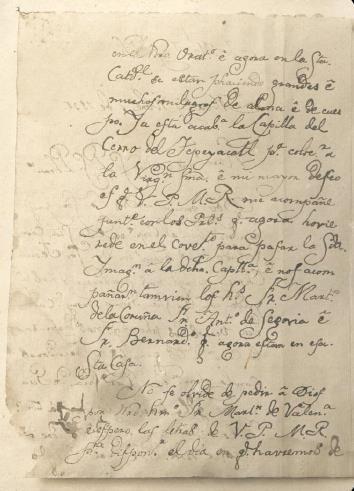
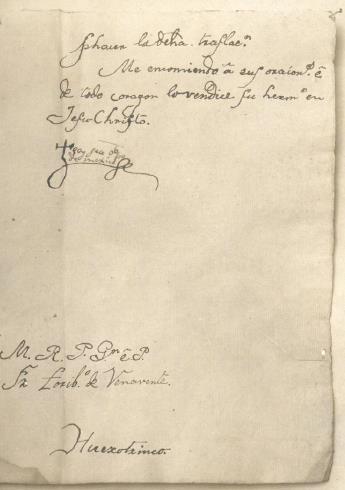
Inevitablemente, para los criterios de análisis debemos comenzar citando que el 5 de la fecha de creación del documento aparece emborronado (Fig. 4), creando una primera duda sobre el mismo.


Fig. 4: “México y noviembre 2 de 1535”.
Parece, por otro lado, bastante claro que el autor corrigió diferentes palabras en el citado texto, lo cual no deja de sorprender:

Fig. 5: “Muchos milagros de alma e de cuerpo”.
Donde se aprecia corregida la palabra “alma”.




Fig. 6: “La Virgen santísima, e mi mayor deseo”.
Donde se aprecia corregida la palabra “deseo”


Fig. 7: “Juntamente con los prelados que agora hoviérede. [sic]” Donde se aprecia corregida la palabra “hoviérede”


Fig. 8: “Nuestro hermano fray Martín de Valencia”. Donde se aprecia corregida la letra “F”

Fig. 9: “Para disponer el día”. Donde se aprecia corregida la palabra “para”


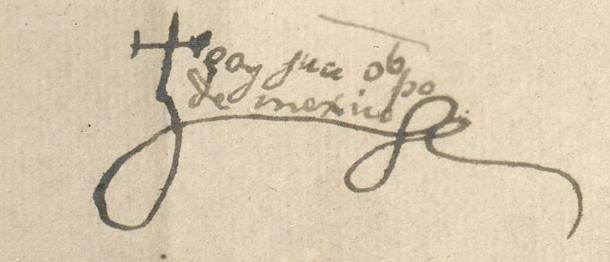

Fig. 10: En la propia firma. Donde se aprecian corregidas las palabras “Fray” y “obispo”.
Veamos ahora el extrañísimo uso abundante de ph en lugar de f. Está sin definir el motivo, aunque podría ser un modismo local. Con respecto a ph fue tomada del griego φ y era pronunciada así por los hablantes educados en el latín clásico. Para la primera edición de la Orthographia3, de 1741, la Academia optó por conservar el grupo PH, pero simplificó los restantes helenismos a sus formas fonéticas. Si debemos poner un límite temporal parece ser que ya no existe la ph hacia 1807, pero sí cuarenta años antes.
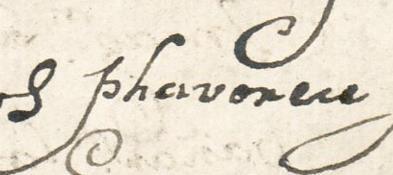

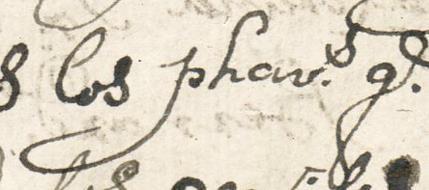

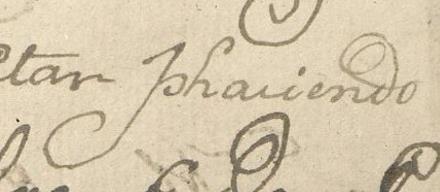

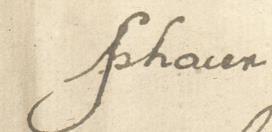

Fig. 11: Algunos ejemplos “phavorece”, “pavores”, “phaciendo” y “phacer” [sic].
Bastante claro parece estar que el autor falsificó la firma del Obispo que presenta un trazo con otra tinta y con signos de falsificación.

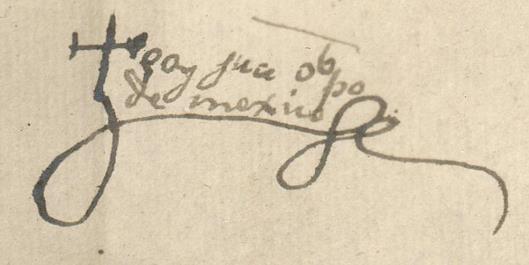

Fig. 12: Firma del documento estudiado
3 Orthographía española, publicada en 1741 por la Real Academia Española (RAE), https://www.rae.es/sites/default/files/Ortografia_RAE_1741_reducida.pdf
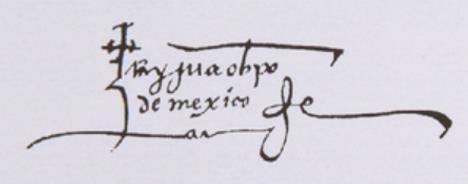

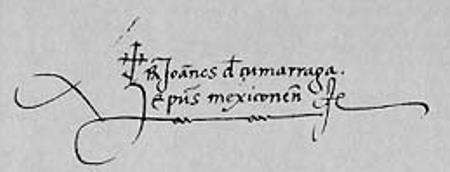

13: Firmas originales
La rúbrica de la firma es la línea o especie de dibujo que se realiza o no debajo o por encima de la firma. Resulta extraño que en el documento se trace la rúbrica de la firma la misma persona que ejecutó el texto documental y no el propio obispo.

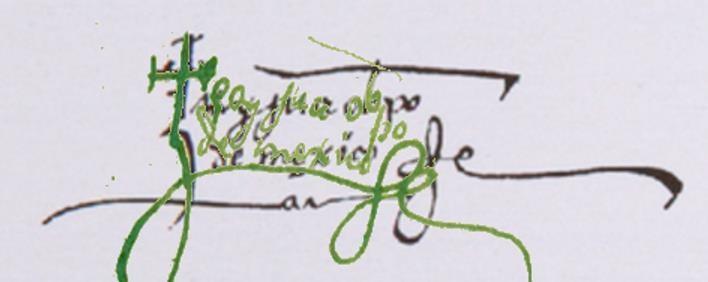

14: Estudio comparativo.
Como conclusiones finales4 se puede definir que:
1. Se trata de un duplicado del original, hecho a más tardar en los siglos XVII-XVIII.
2. Es un documento creado teniendo presente el documento original, si existió, o bien otros documentos del obispo Zumárraga dirigidos incluso al propio Motolinía.
Para reforzar este estudio se proponen los siguientes elementos a tener en cuenta:
1. Ver la filigrana del papel (una filigrana o marca de agua es una imagen formada por diferencia de espesores de una hoja de papel) y emparentarla con la de otros documentos.
2. Realizar un análisis de las tintas.
3. Compararlo con otros documentos originales del obispo Zumárraga.
4. Contrastar, si es posible, la estancia en el convento con Motolinía de los tres frailes citados.
GONZÁLEZ FERNÁNDEZ, Fidel, Guadalupe Pulso y Corazón de un Pueblo, Ediciones Encuentro, Madrid, 2004.
Orthographía española, publicada en 1741 por la Real Academia Española (RAE), https://www.rae.es/sites/default/files/Ortografia_RAE_1741_reducida.pdf.

4 Debemos destacar en este trabajo la colaboración de María Josefa Sanz Fuentes, Catedrática de CC. Y TT. Historiográficas de la Universidad de Oviedo a la que agradecemos su asesoramiento y ayuda.

PBRO
Nació el 7 de noviembre de 1964 en la Ciudad de México, D.F., México. Ingresó a la Congregación de Misioneros Hijos del Inmaculado Corazón de María en México en 1999 e hizo su primera profesión en Guadalajara el 15 de agosto de 1985. Pronunció sus votos perpetuos el 17 de agosto de 2002. Fue ordenado sacerdote el 16 de julio de 2004 en el Purísimo Corazón de María en la Ciudad de México. Fue Prefecto de Apostolado de 2016 a 2022 y Vicario Provincial de 2021 a 2022. También fue Prefecto de los Estudiantes de Teología de 2021 a 2022. Es, asimismo, licenciado en Antropología Social por la Escuela Nacional de Antropología e Historia y maestro en Pastoral Urbana por la Universidad Lumen Gentium.
DR. ARTURO A. ROCHA CORTÉS

Filósofo, músico, conferencista y escritor mexicano que se ha especializado en ética, axiología y valores, escribiendo sobre todo en torno a la mexicanidad, la conciencia ética en México, las tradiciones mexicanas y el denominado Acontecimiento Guadalupano. Es Doctor en Filosofía “Mención Honorífica” por la Universidad Anáhuac, con estudios en Madrid, Valencia, Soria y Roma; cuenta con Maestría en Humanidades “Magna cum Laude” por el Ateneo Filosófico de México y con la Licenciatura en Filosofía por la Universidad La Salle. Actualmente es Director Académico del Colegio de Estudios Guadalupanos (COLEG) de la Universidad Intercontinental y catedrático de la Universidad Panamericana, ambas en la ciudad de México. Fue editor del Boletín Guadalupano de la Basílica de Guadalupe, Editor de la Revista Voces de la Escuela de Teología de la UIC del 2011 al 2109 y Director de investigación de la Fundación México Unido por más 20 años. Ha dictado conferencias en diversas ciudades en el Distrito Federal, Toluca, Puebla, Guadalajara, Pachuca, Irapuato, Chihuahua, Ciudad Victoria, Aguascalientes, Gómez Palacios, Cancún, Tijuana y Monterrey e internacionalmente en Madrid, Valladolid, Soria, Valencia, Roma, Atlanta, Nueva York, Denver, Washington DC y Jerusalén. Entre sus obras destacadas se cuentan: Nadie es ombligo en la tierra. Discapacidad en el México antiguo (Cultura náhuatl) (2000), Los valores que unen a México. Los valores propios de la mexicanidad, vols. I y II (2003 y 2010),
Monumenta Guadalupensia Mexicana (2010), La llave de Guadalupe, esta última con dos ediciones (2014 y 2018) y Pedagogía Guadalupana. Valores para una Misión (2023).
Actualmente cursa un doctorado en Teología en la Universidad de Notre Dame. Su trayectoria académica está marcada por una Maestría en Estudios Teológicos de la Escuela de Divinidad de Harvard y una Licenciatura en Filosofía de la Universidad Católica Lumen Gentium en la Ciudad de México. Su enfoque académico se complementa con su profundo compromiso con las lenguas y culturas indígenas, particularmente a través de su investigación etnográfica en la región de la Huasteca Veracruzana que sido apoyada por el Centro David Rockefeller de Estudios Latinoamericanos y por otros fondos. Su enfoque en el guadalupanismo es amplio oscilando en la historia de las fuentes del Acontecimiento Guadalupano, iconografía de la Imagen, y en el estudio del santo vidente tanto en su bibliografía como en las fuentes primarias. Los estudios de Jorge se extienden al ámbito de la teología de la religión y a la investigación teológico-filosófica del milagro. Su artículo: “Esteban Anticoli Defends Our Lady of Guadalupe: Apologetic Historiography in Mexico and New Mexico” está en proceso de edición. Más allá de la academia, Jorge ha publicado una novela con la editorial planeta bajo el sello de Tusquets: El polvo bajo nuestros pies (disponible en Gandhi, el Sótano, Amazon y en audiolibro), y su segunda novela está en proceso de dictamen. Finalmente, Jorge ha sido una figura fundamental en el desarrollo institucional del Seminario Conciliar de México, donde sus esfuerzos en la recaudación de fondos y las relaciones públicas han tenido un impacto significativo en la organización. Su dedicación al servicio de las comunidades marginadas se refleja aún más en su trabajo de voluntario como intérprete médico en áreas desatendidas. Su trabajo continúa cerrando la brecha entre la erudición histórica y los problemas contemporáneos, lo que lo convierte en un buen contribuyente a las iniciativas académicas y comunitarias.

DR. DAVID SÁNCHEZ SÁNCHEZ
Director de la Facultad de Humanidades UPAEP y Presidente del CEGUPAEP. Es Licenciado en Historia por la Universidad de Oviedo (España), Experto Universitario en Estudios Vascos (UNED, España), Maestro en Estudios Históricos con Mención Honorífica por Investigación por (UPAEP, México) y Doctor en Artes y Humanidades por la Universidad de Navarra, España, (Programa de Doctorado con Mención de Excelencia por el Ministerio de Educación de España) con la máxima calificación (sobresaliente cum laude por unanimidad) y distinción honorífica de "Doctor Internacional" por el Gobierno de España (Especialidad Estudios Hispánicos). Es miembro como Candidato del SNI (Sistema Nacional de Investigadoras) 2025-2028. En cuanto a la docencia es catedrático del Decanato de Ciencias Humanas y Sociales, de la Facultad de Humanidades, de Formación Humanista y de la Facultad de Educación de la Universidad Popular Autónoma del Estado de Puebla impartiendo materias de Historia y Cultura.


